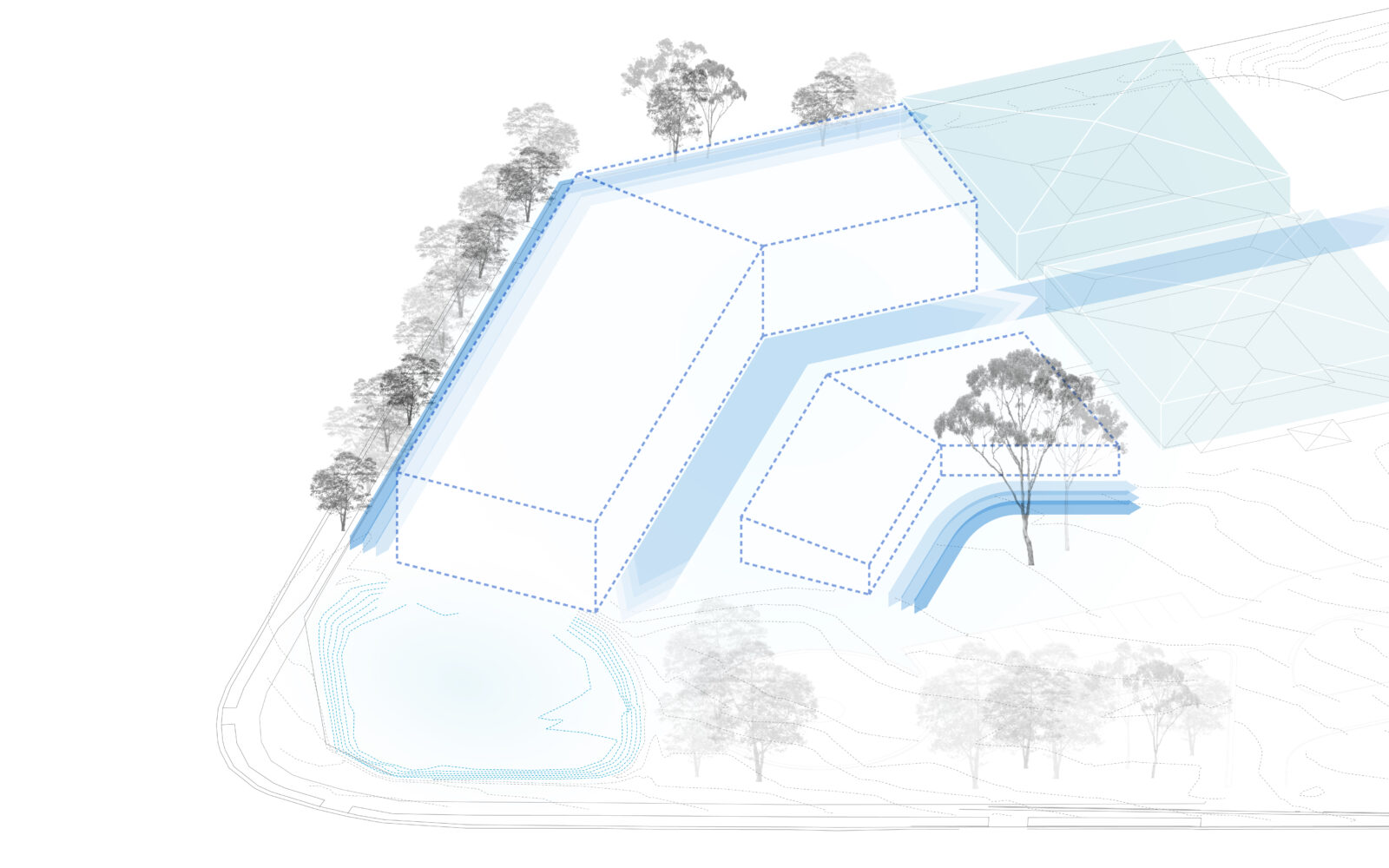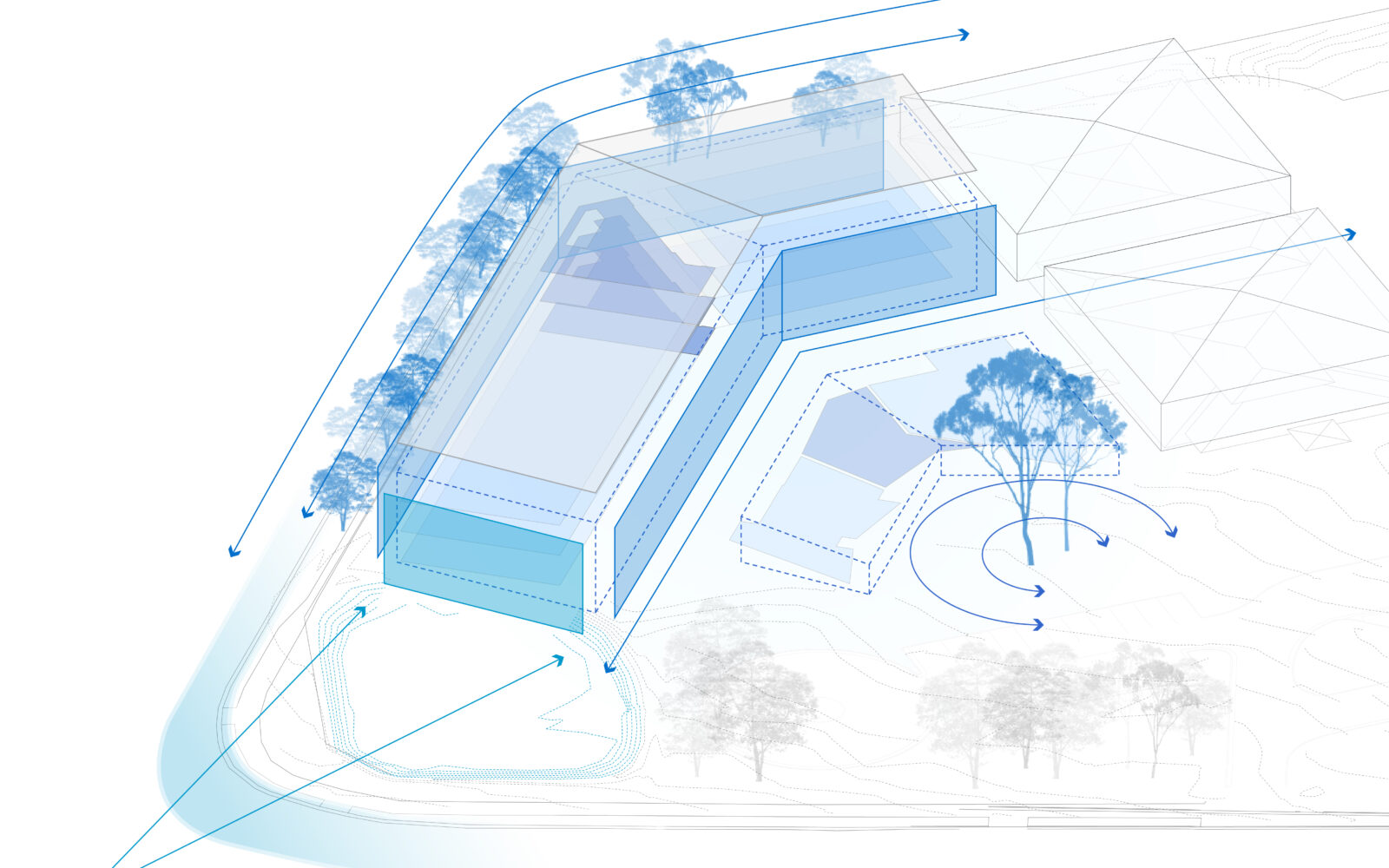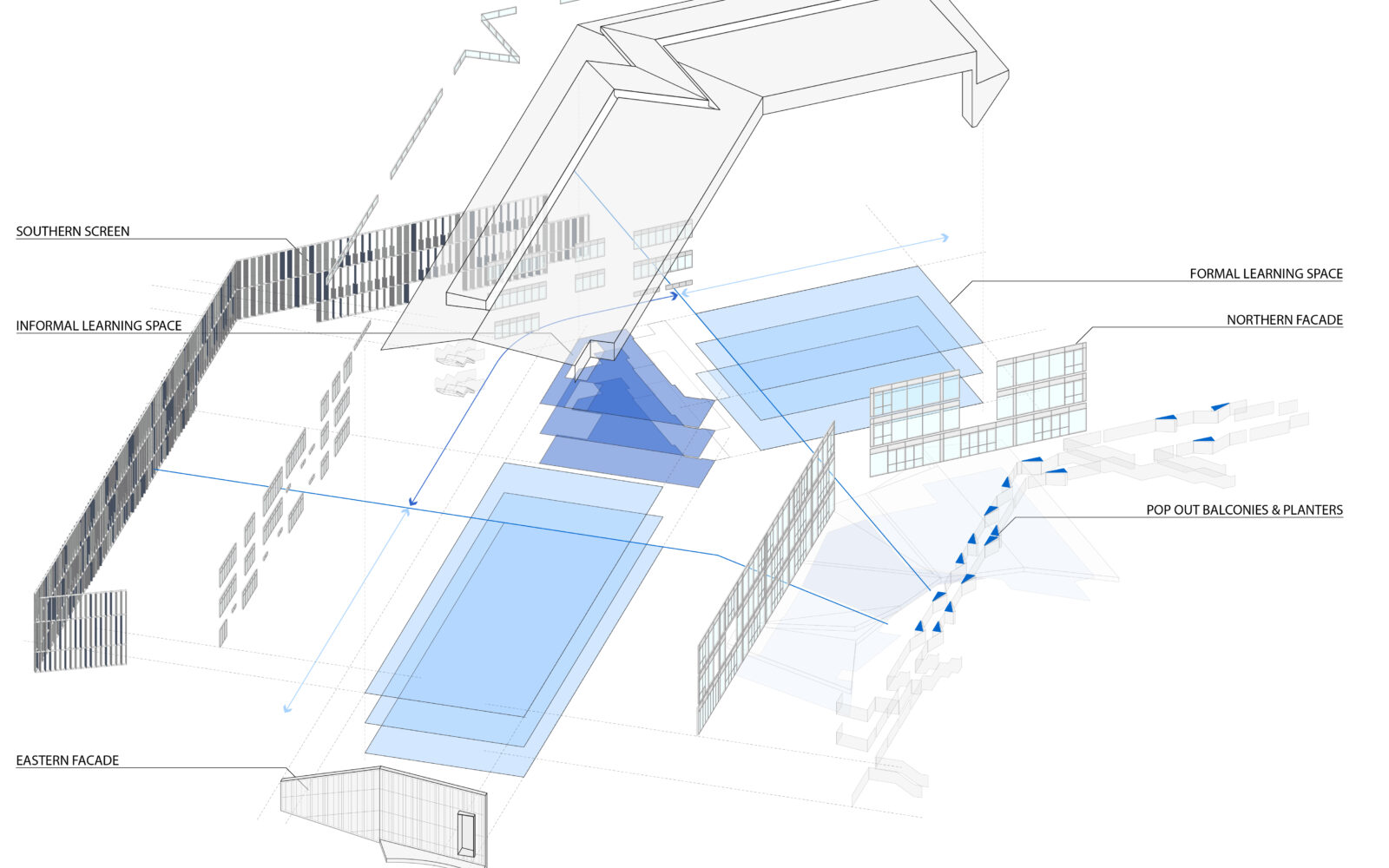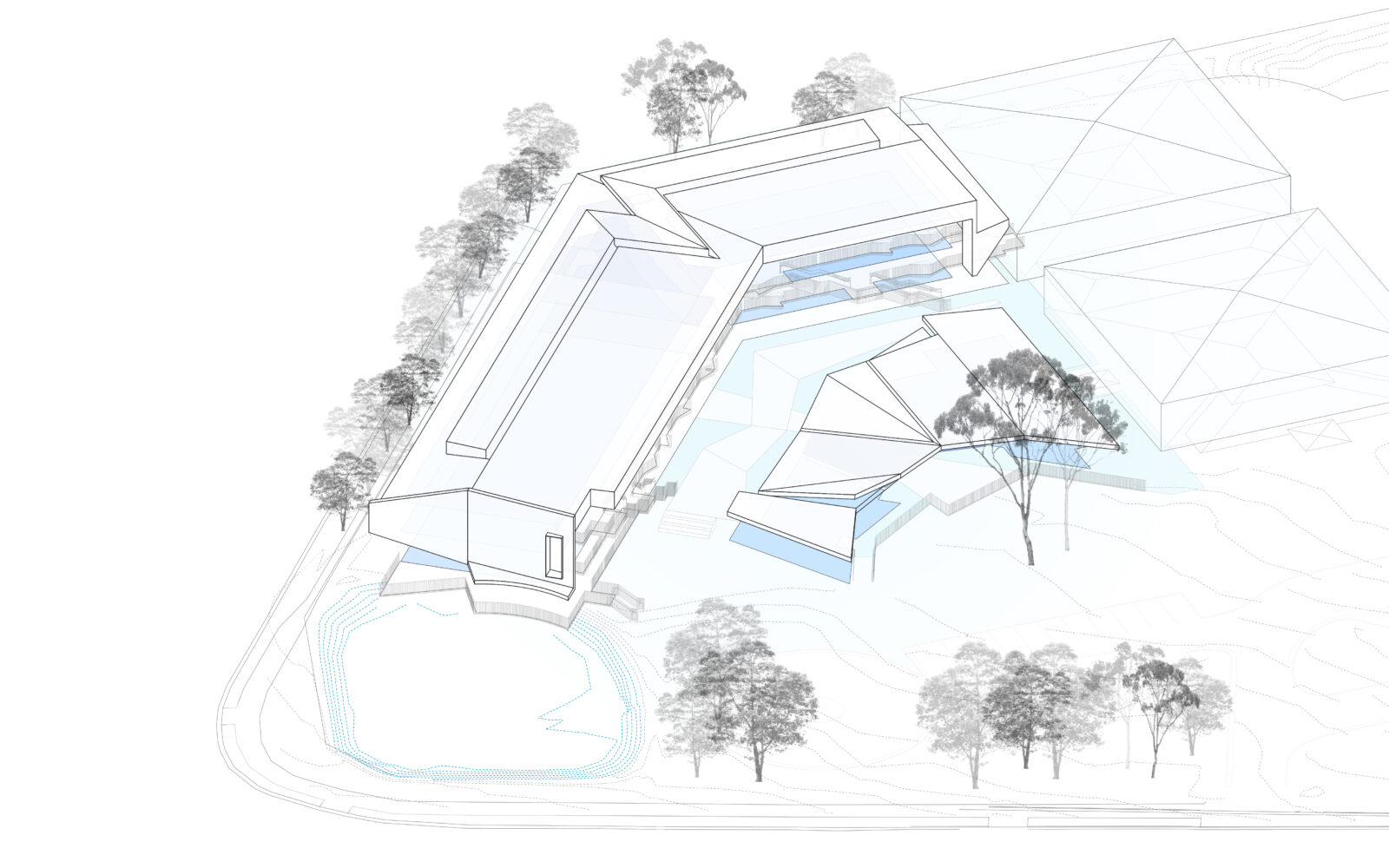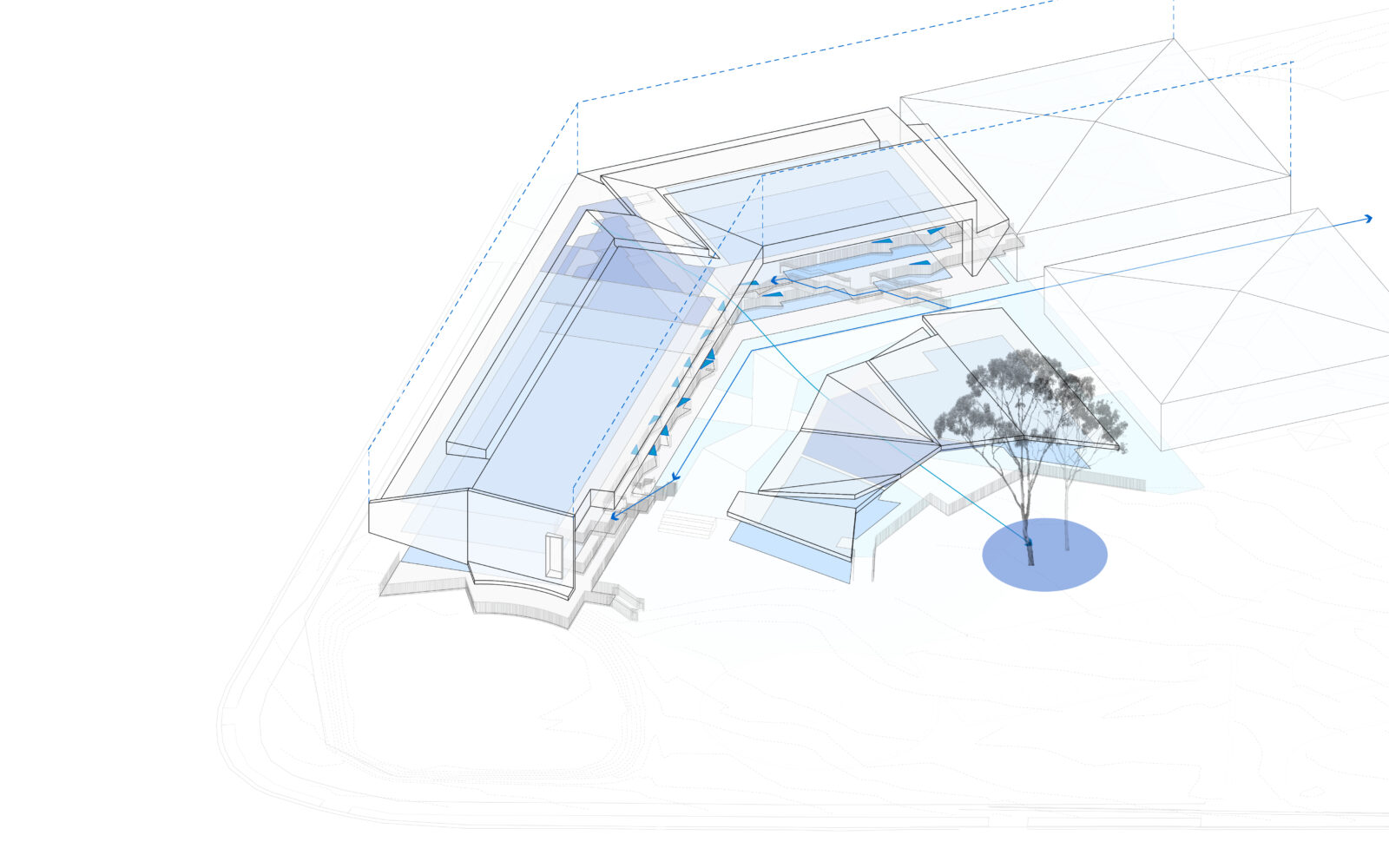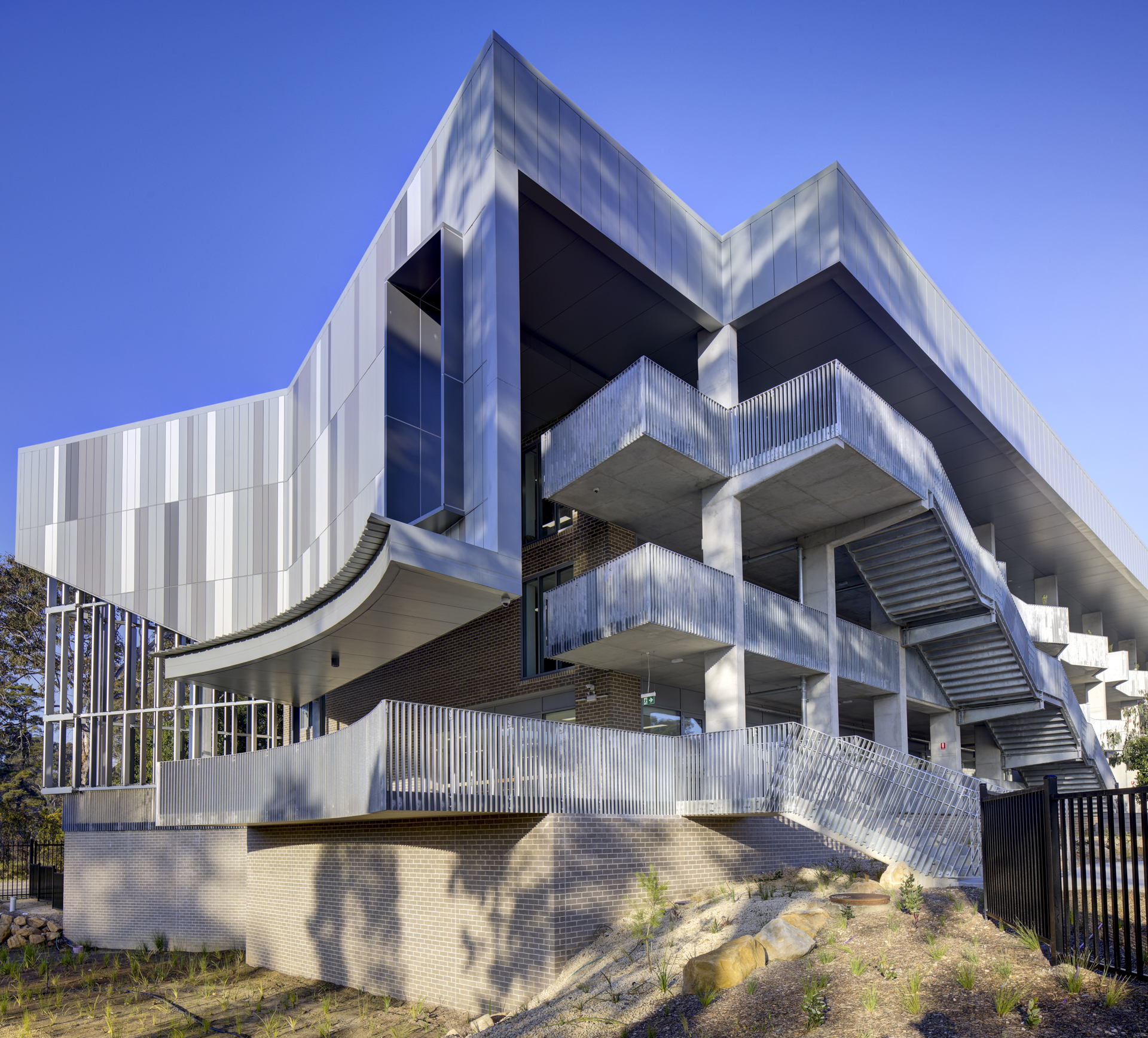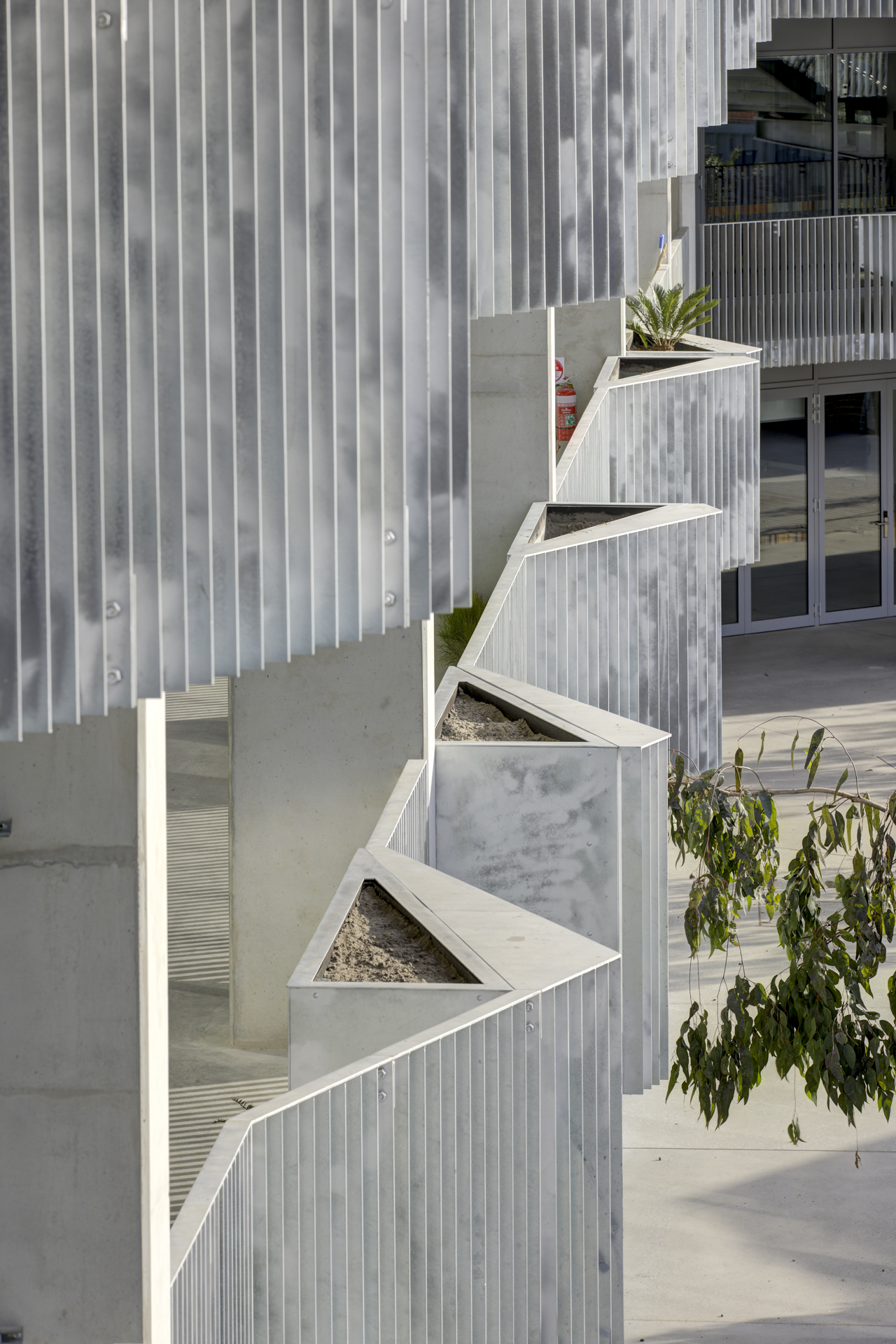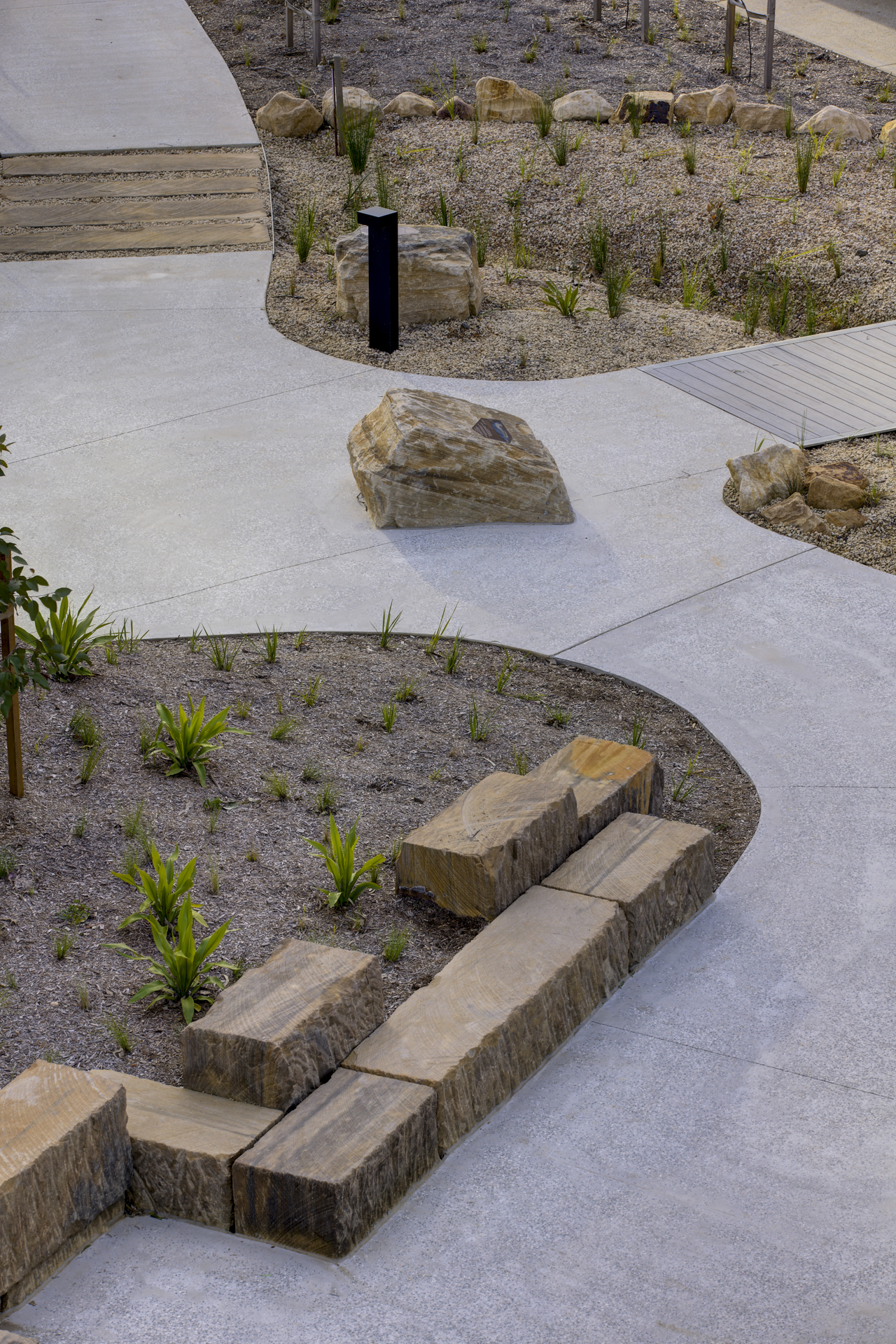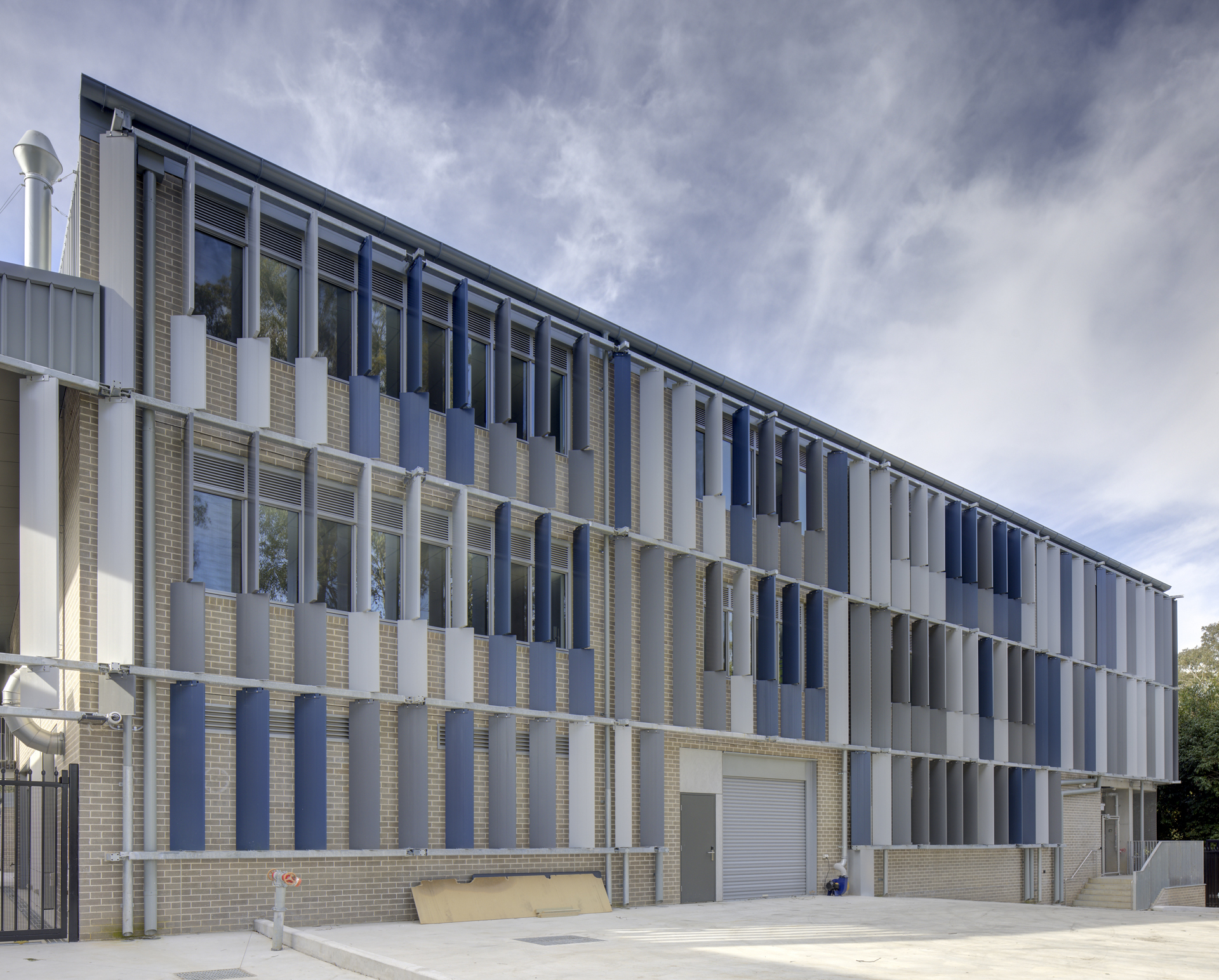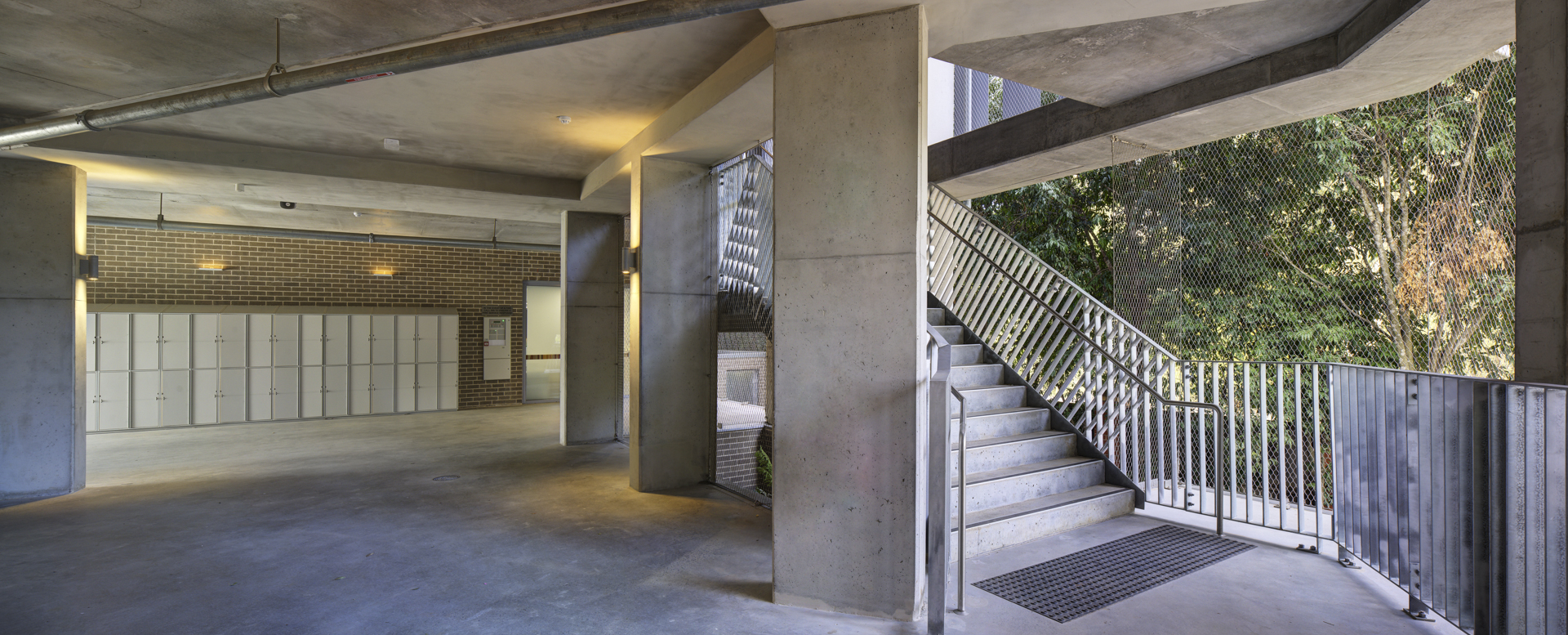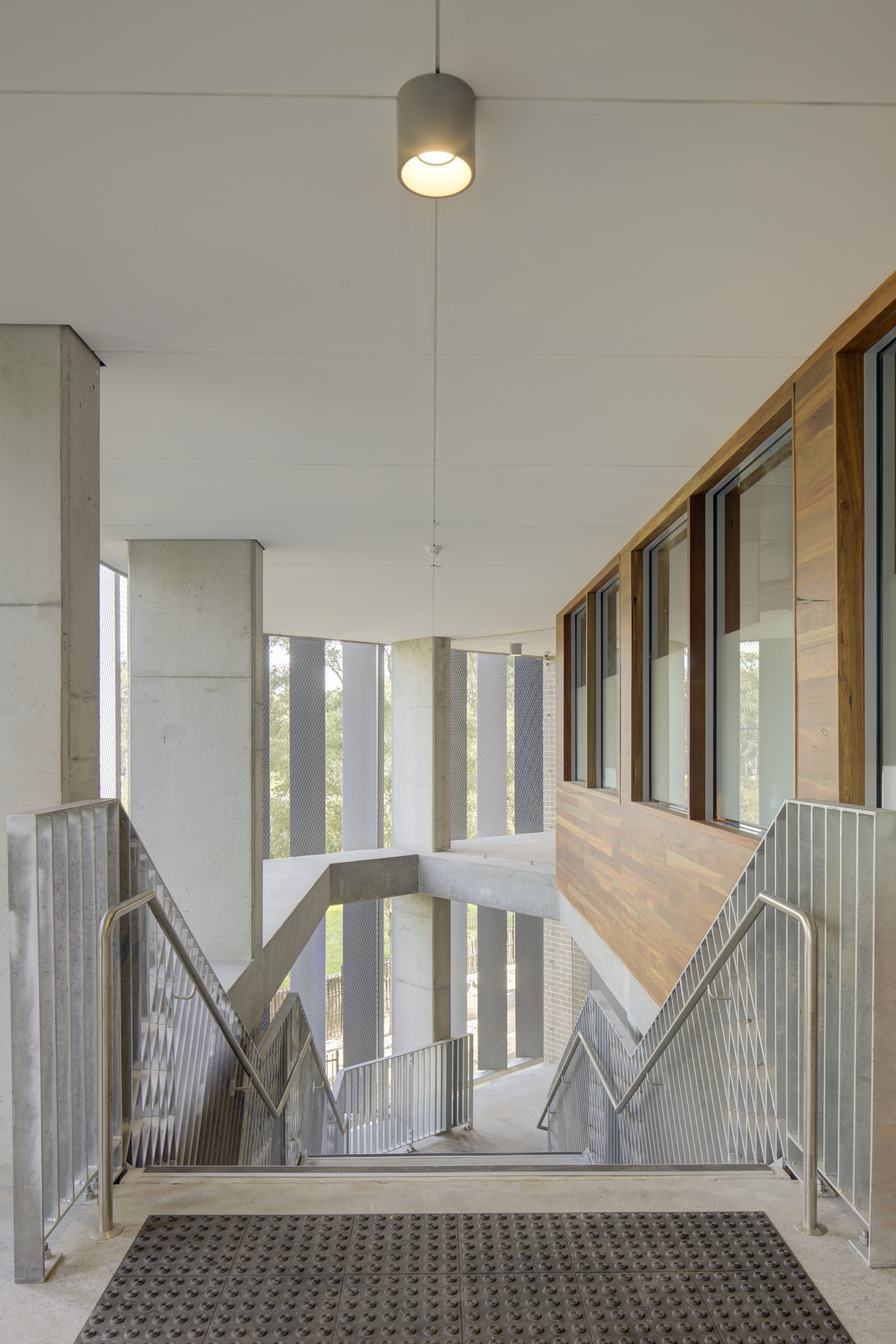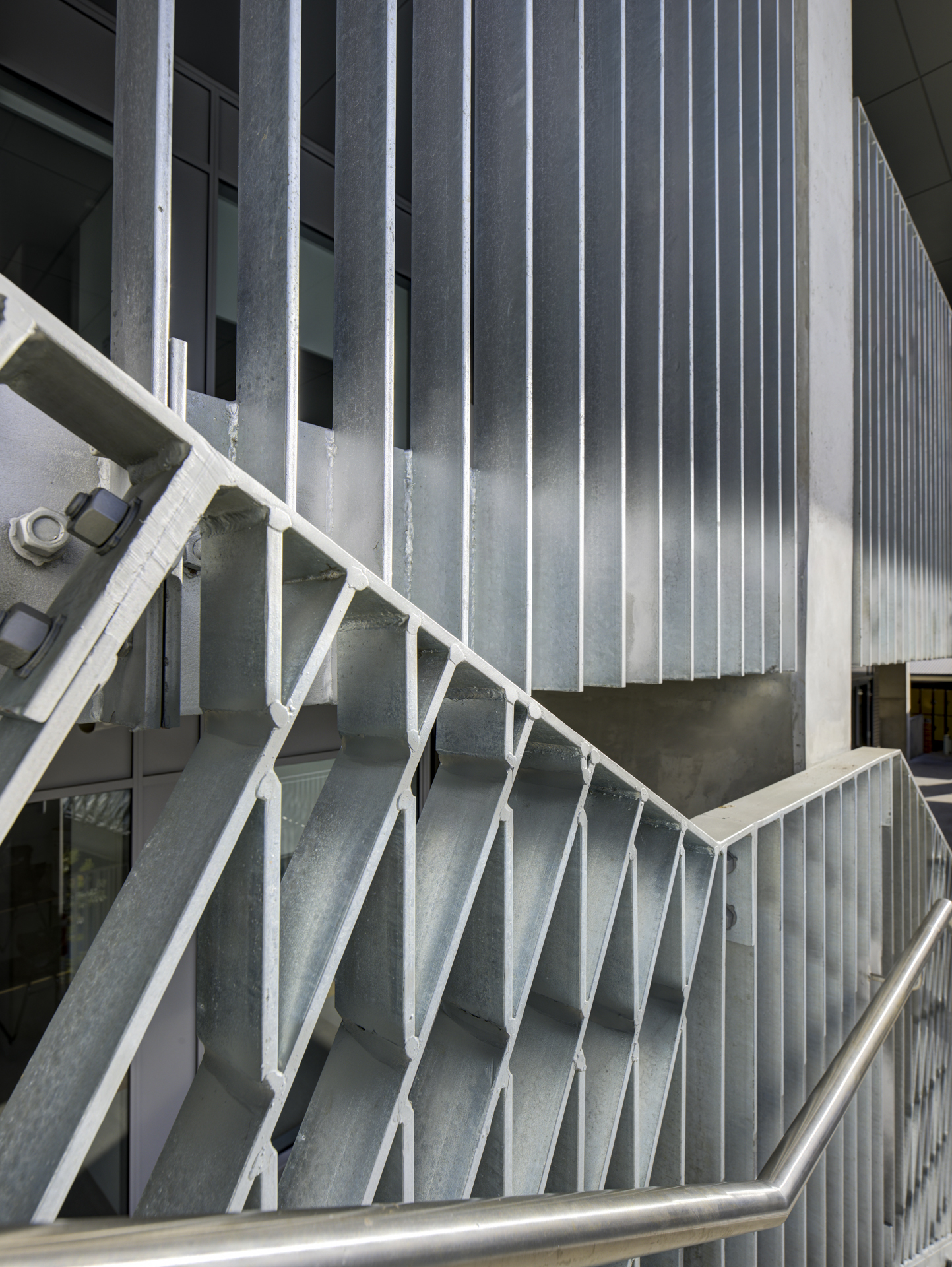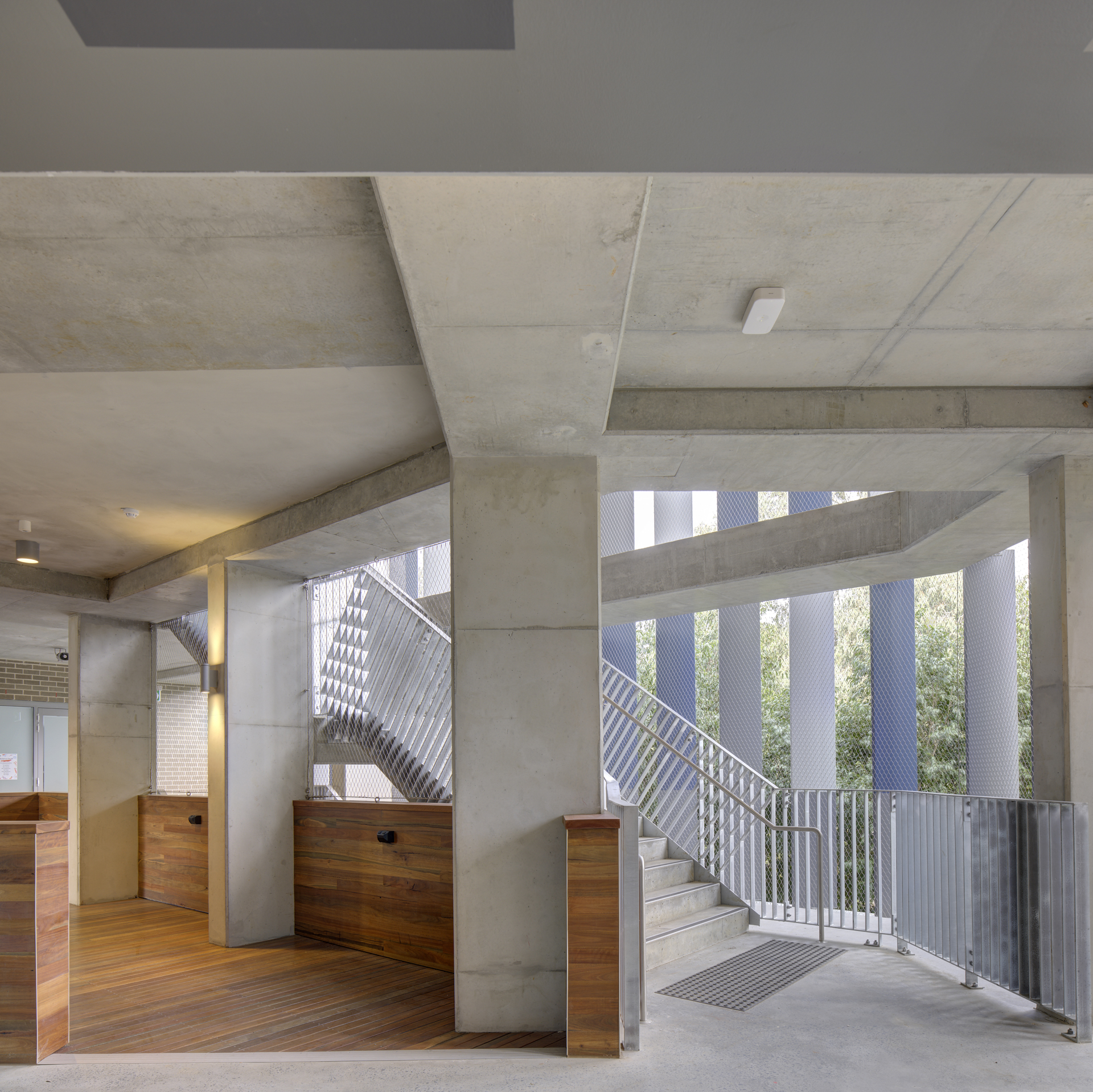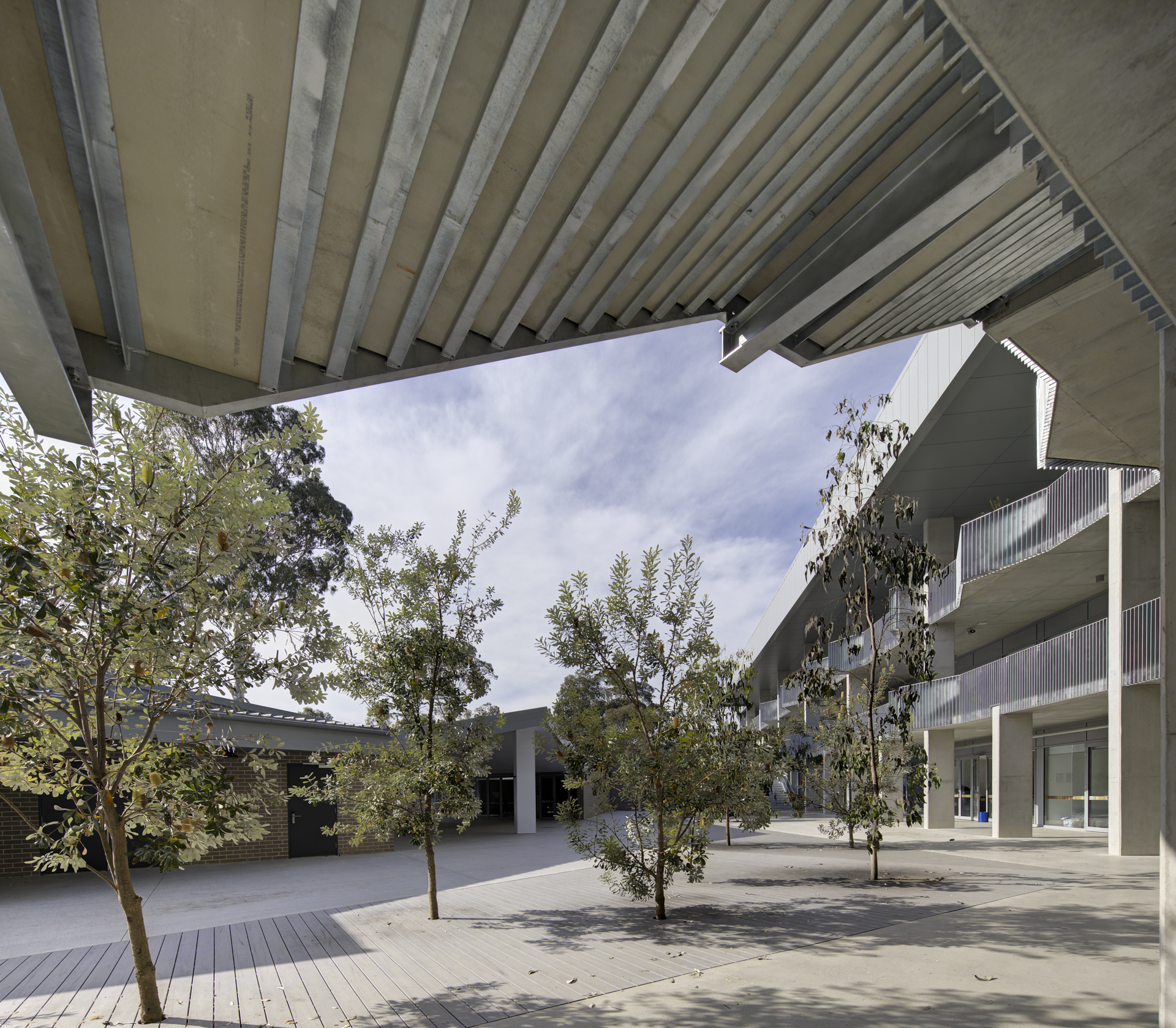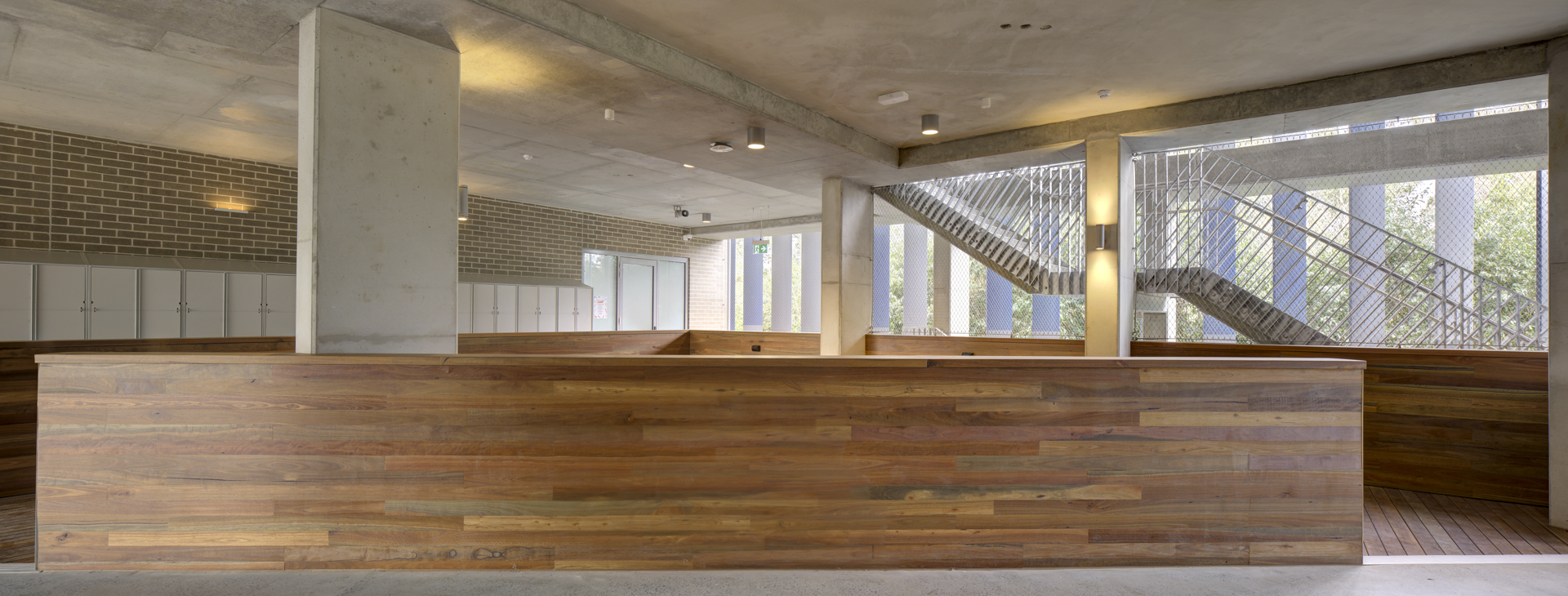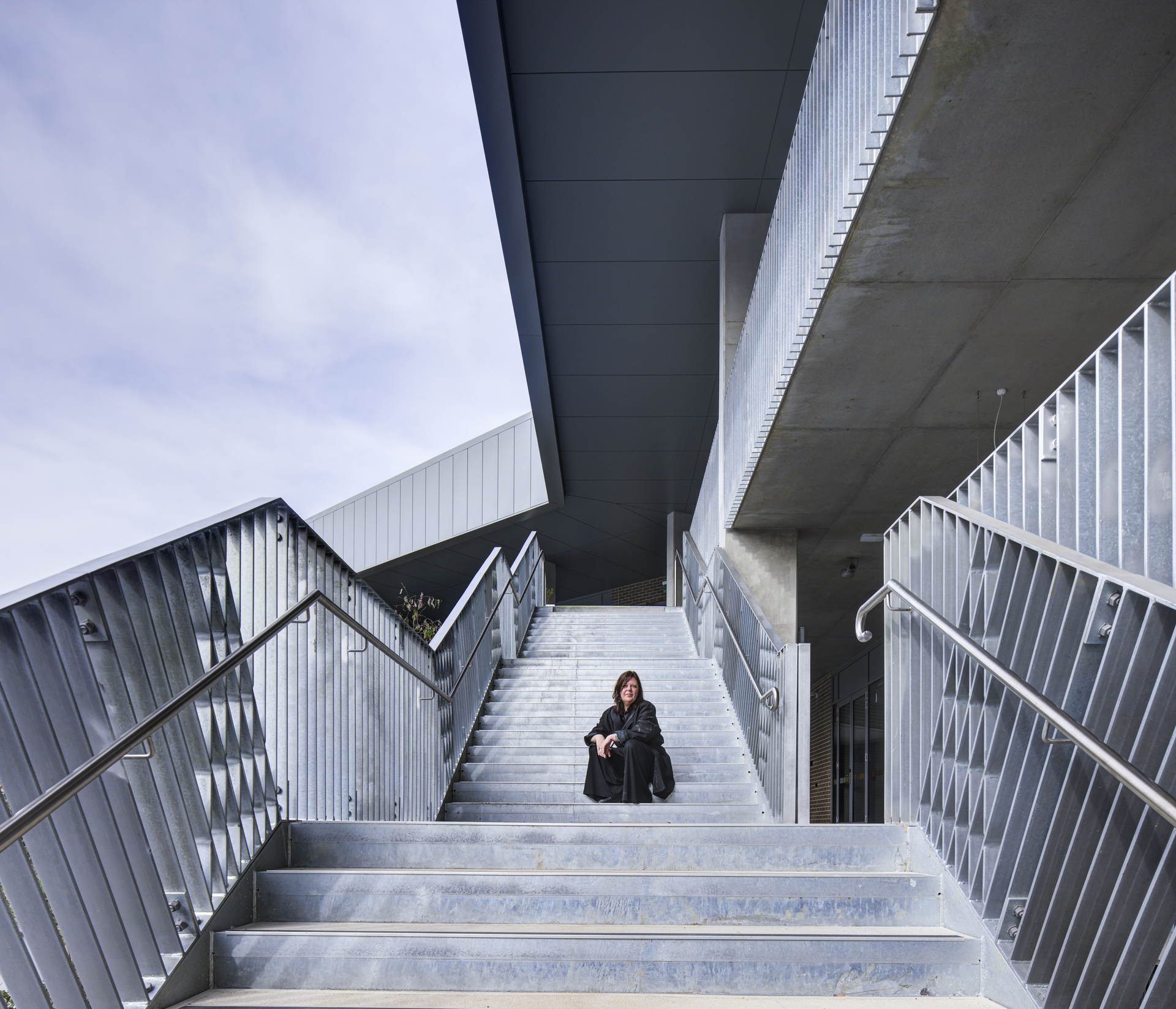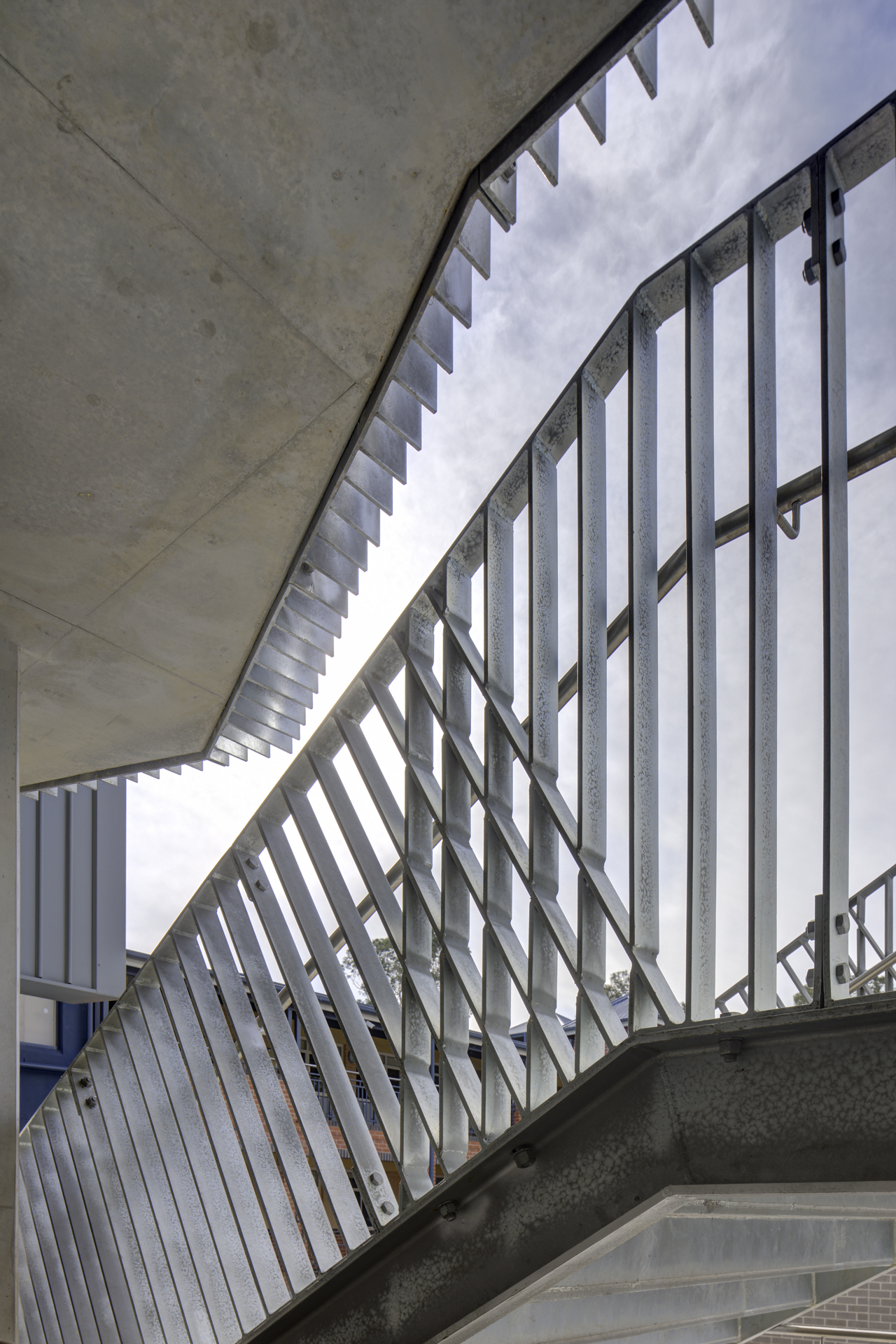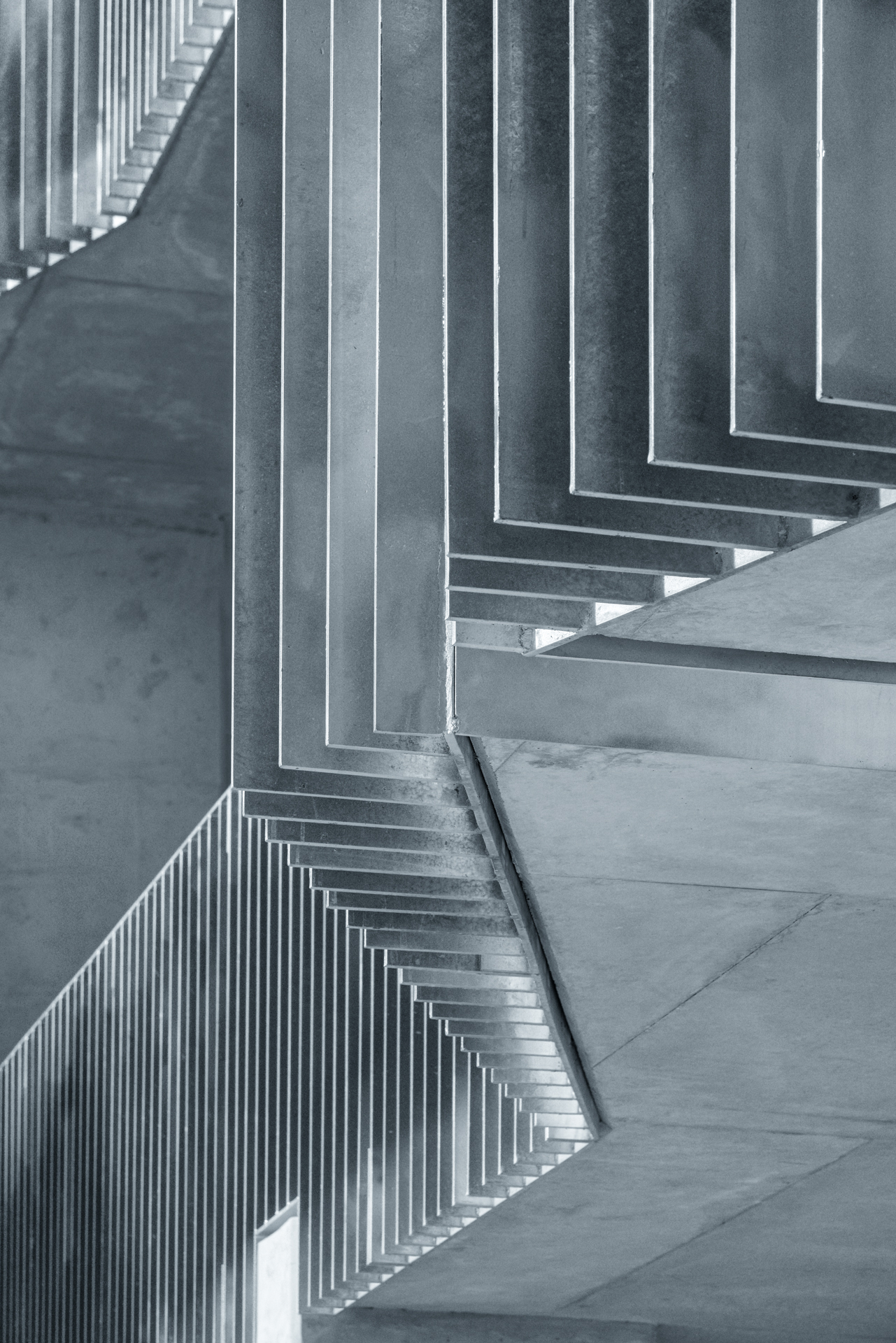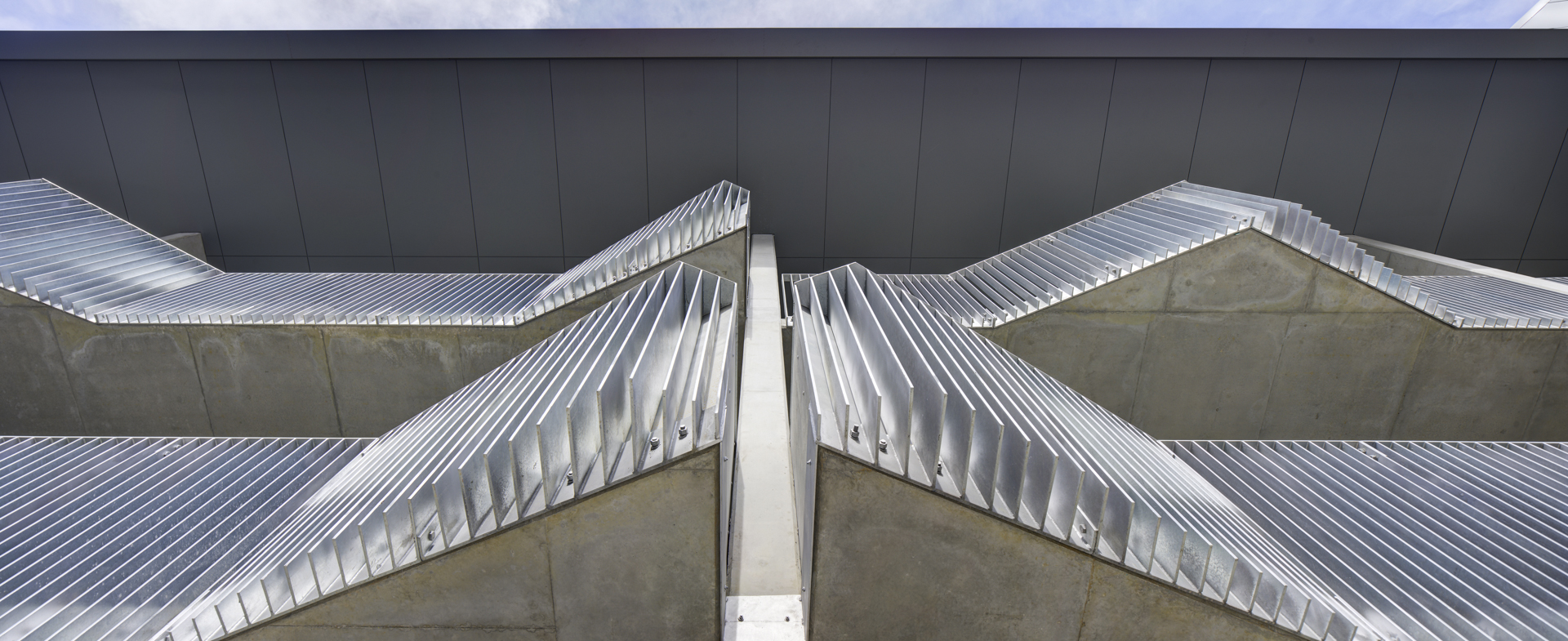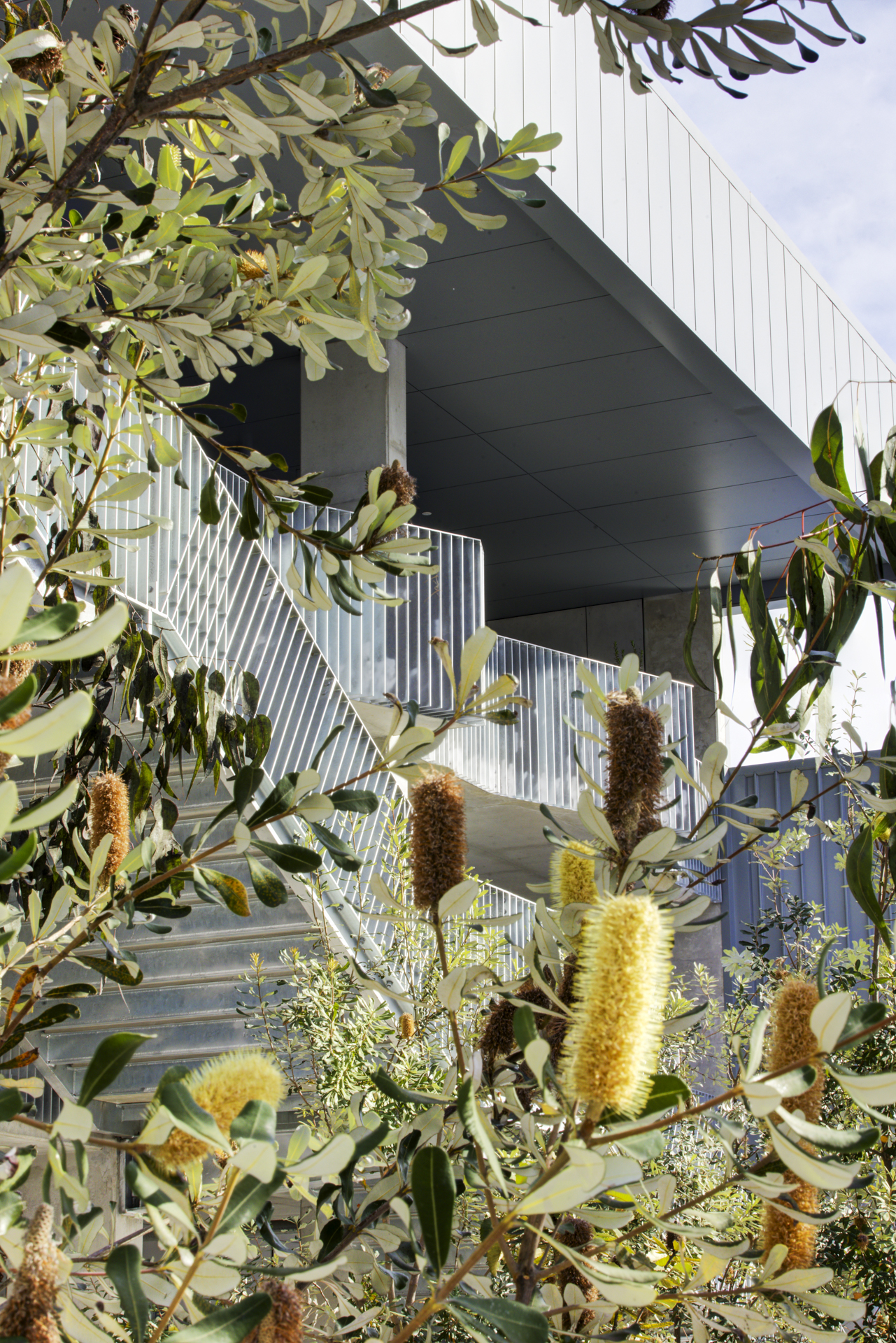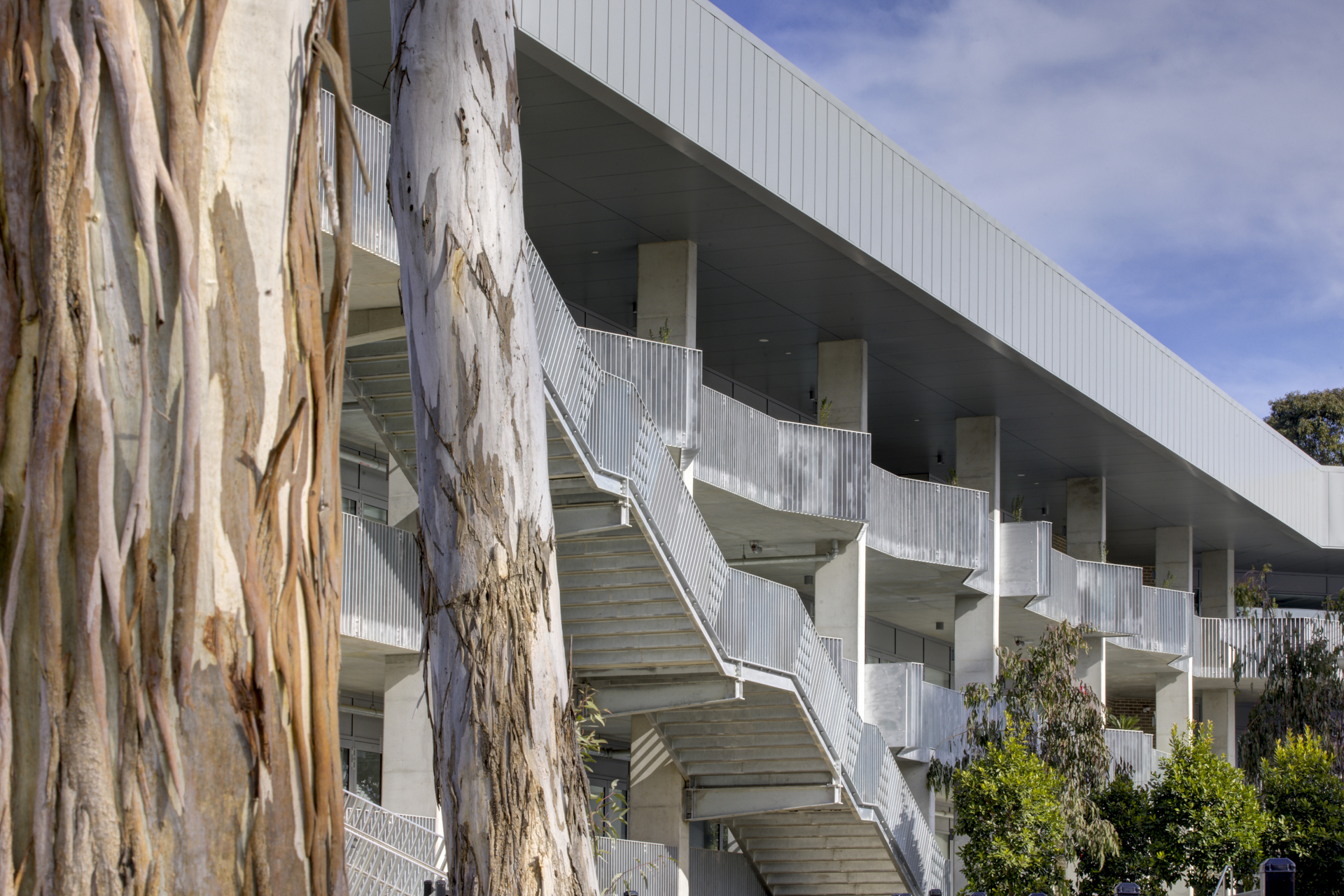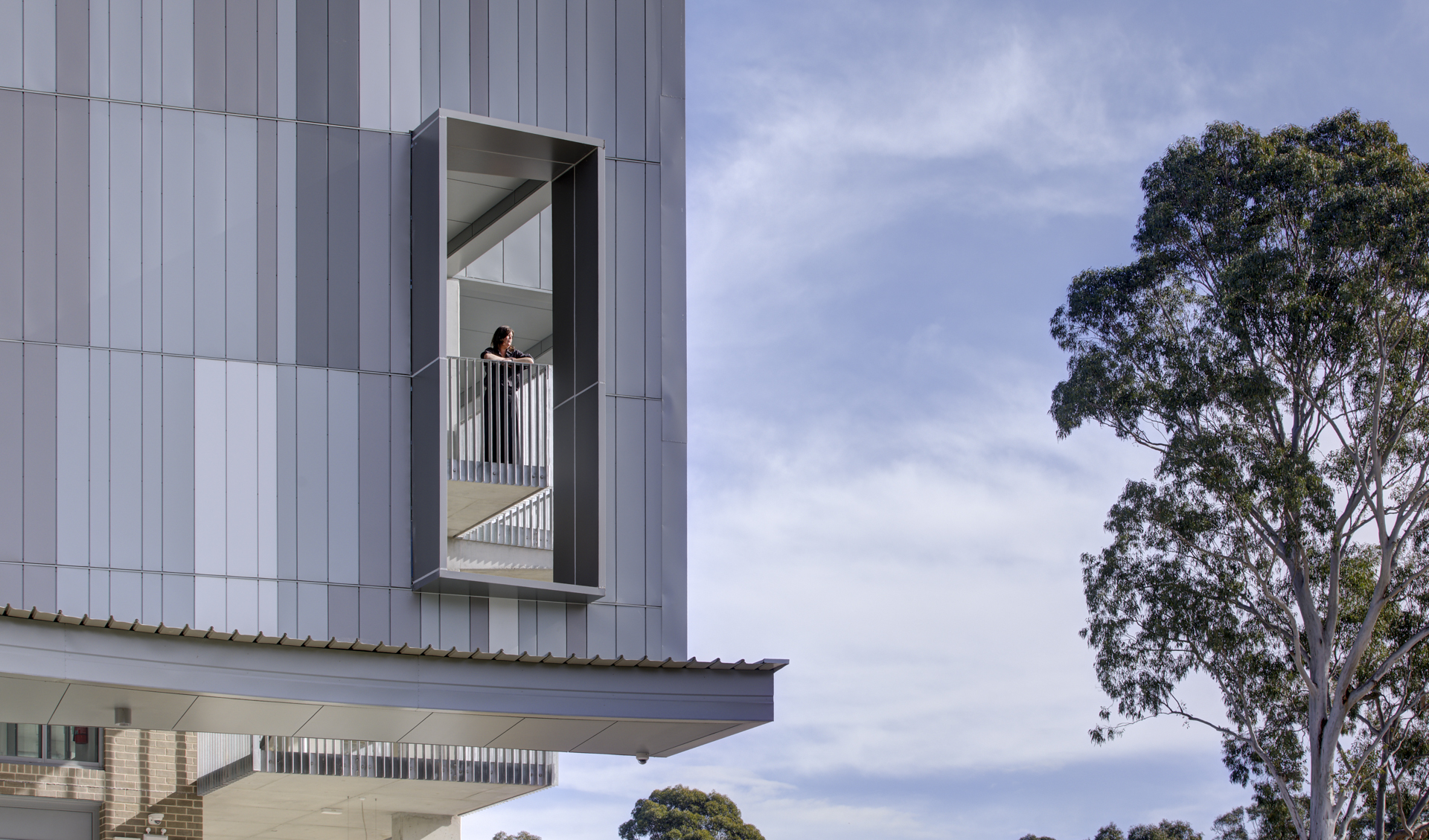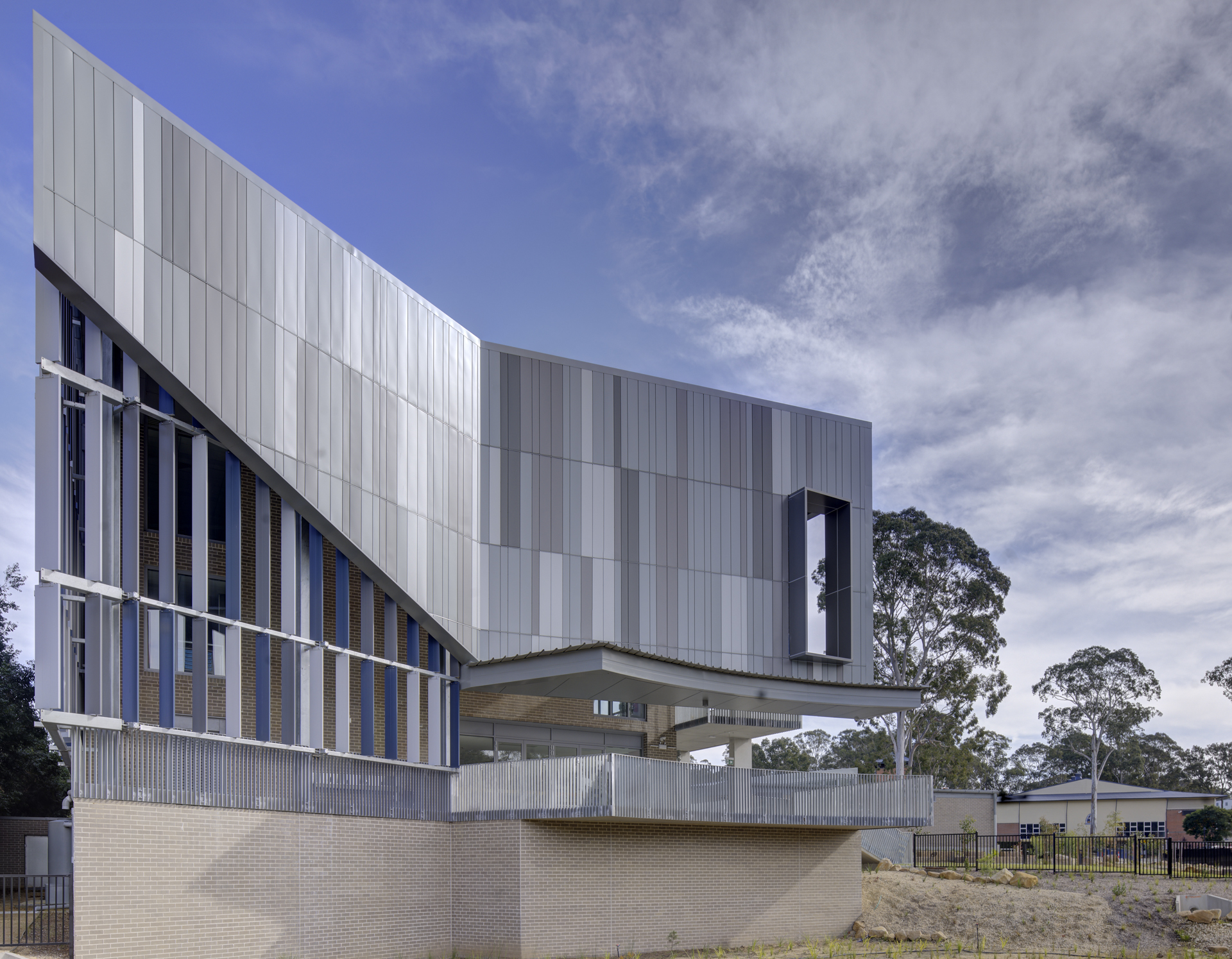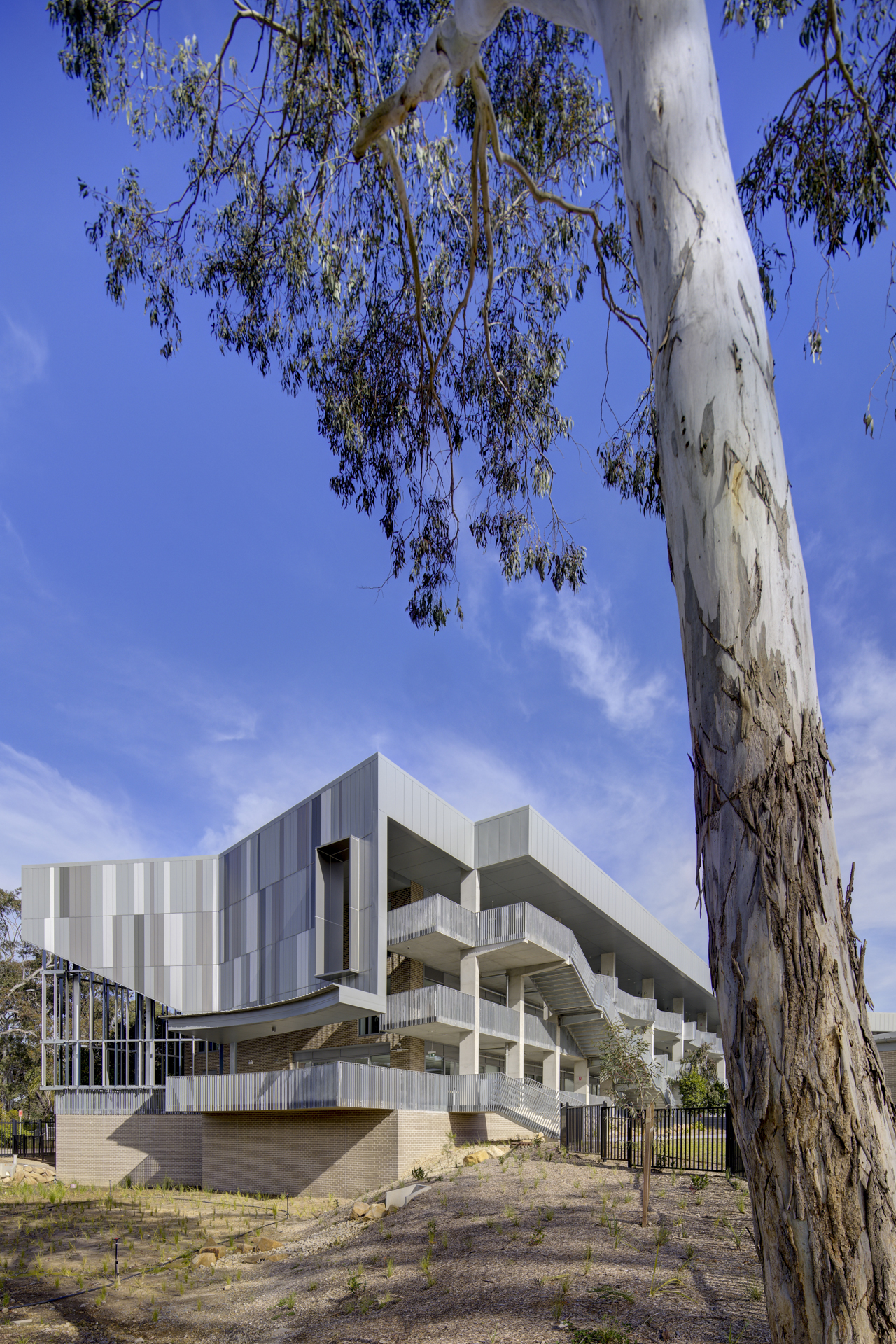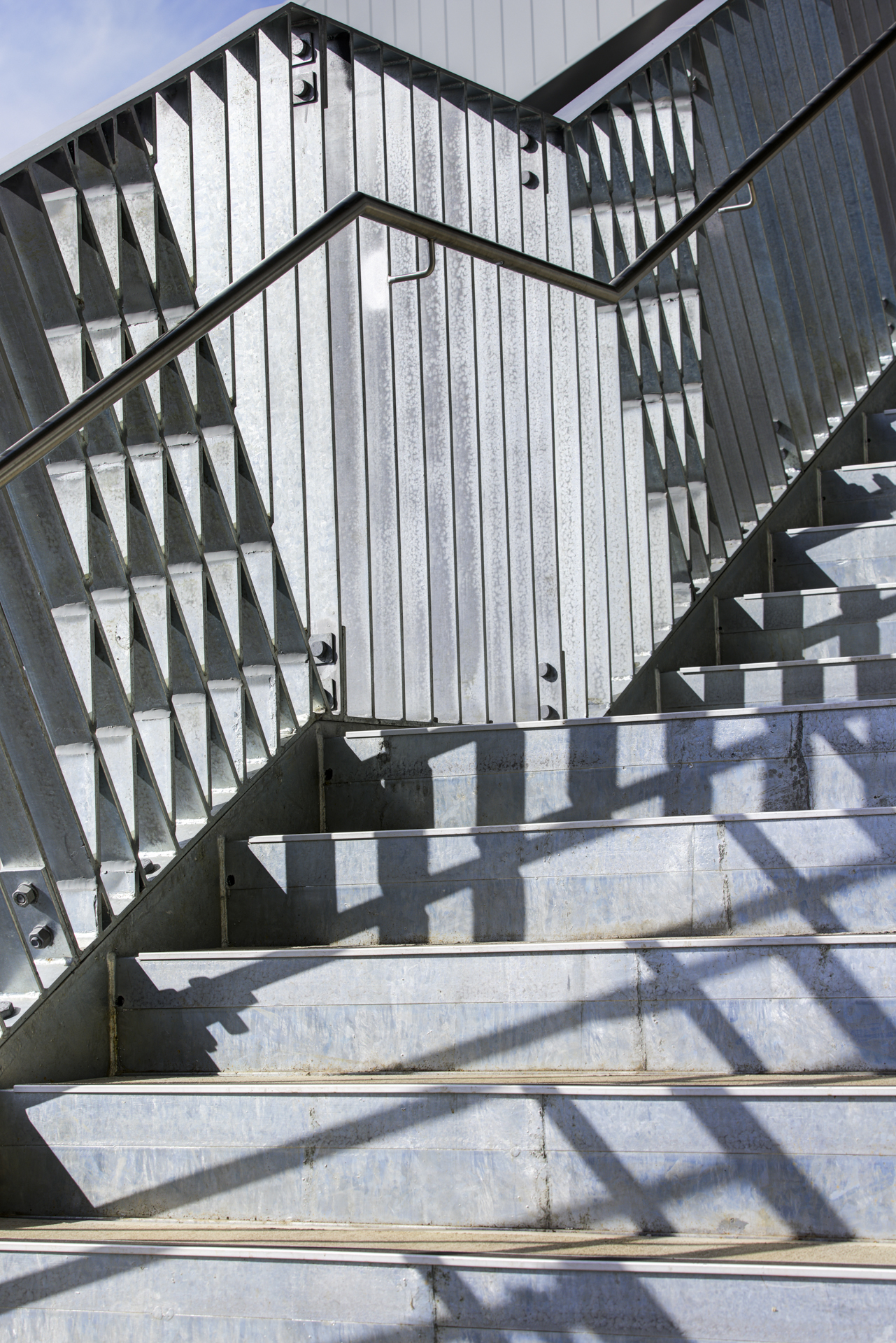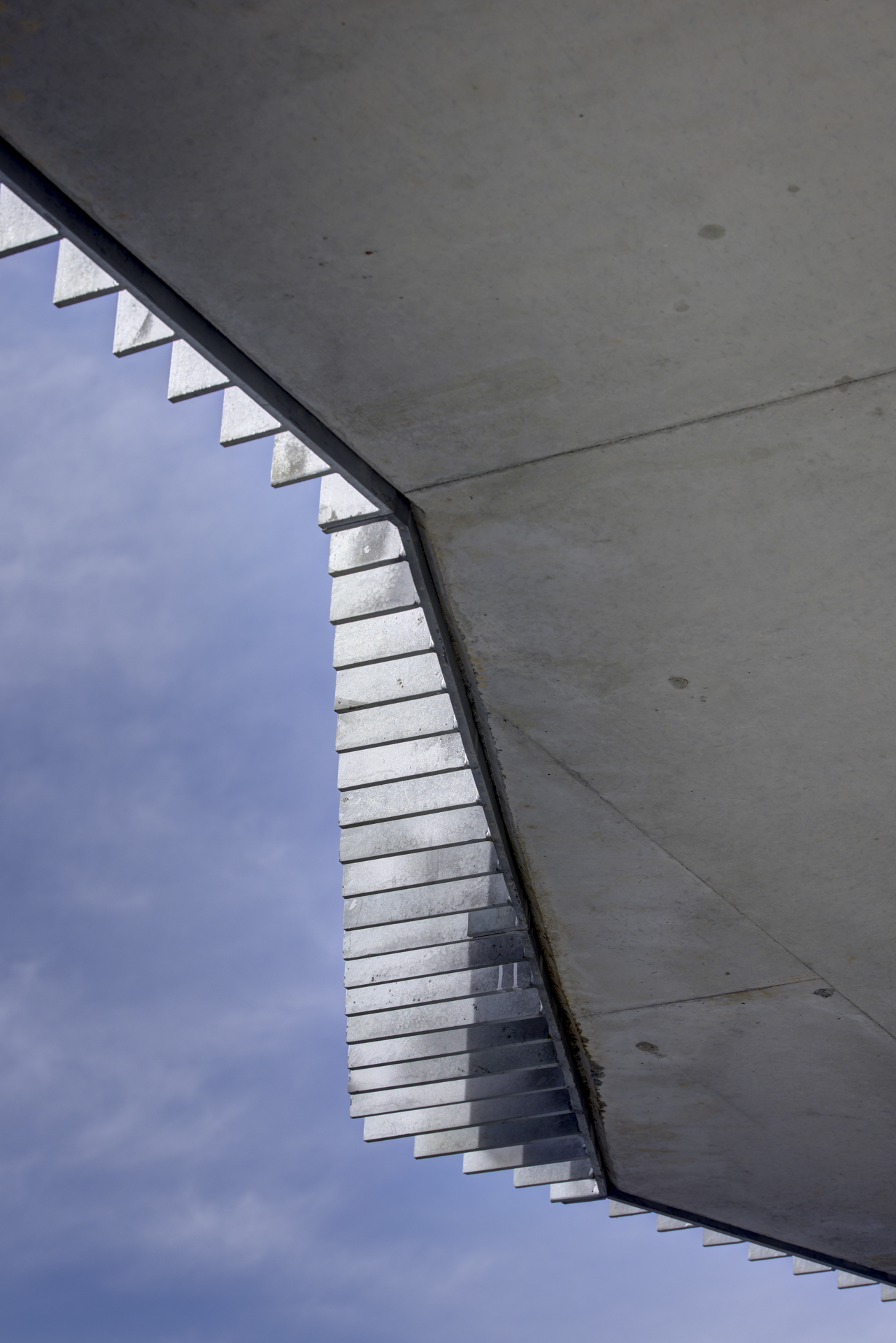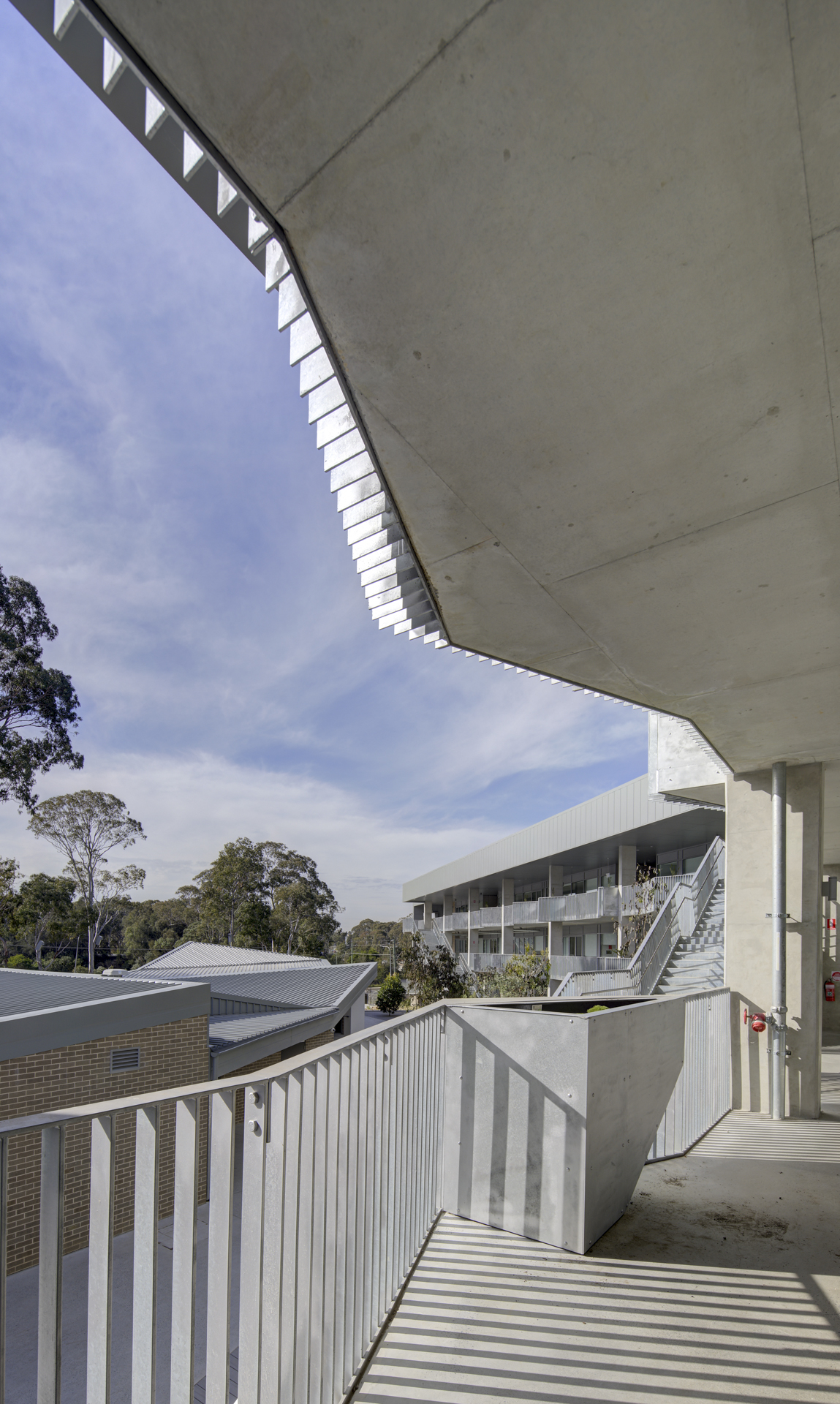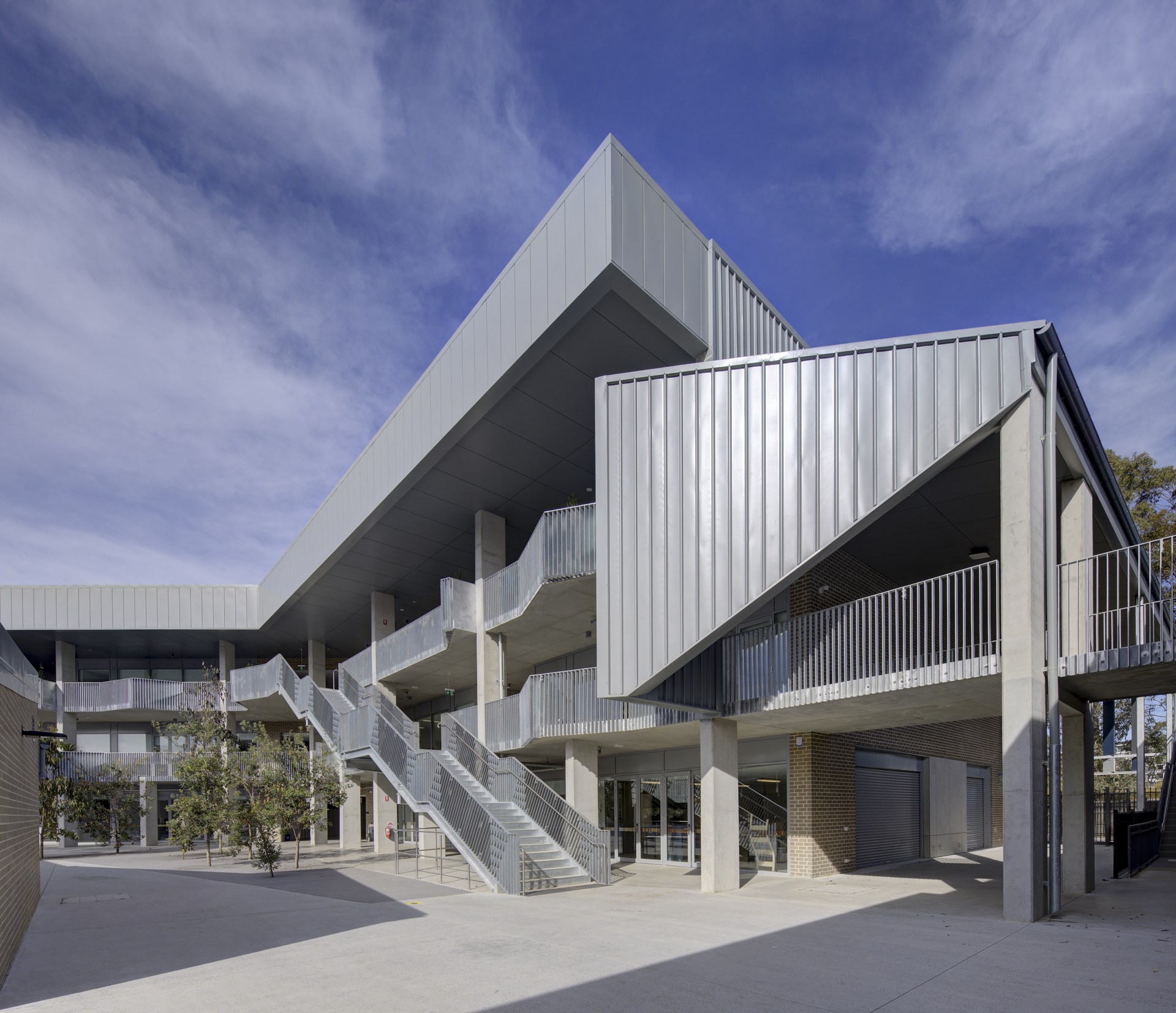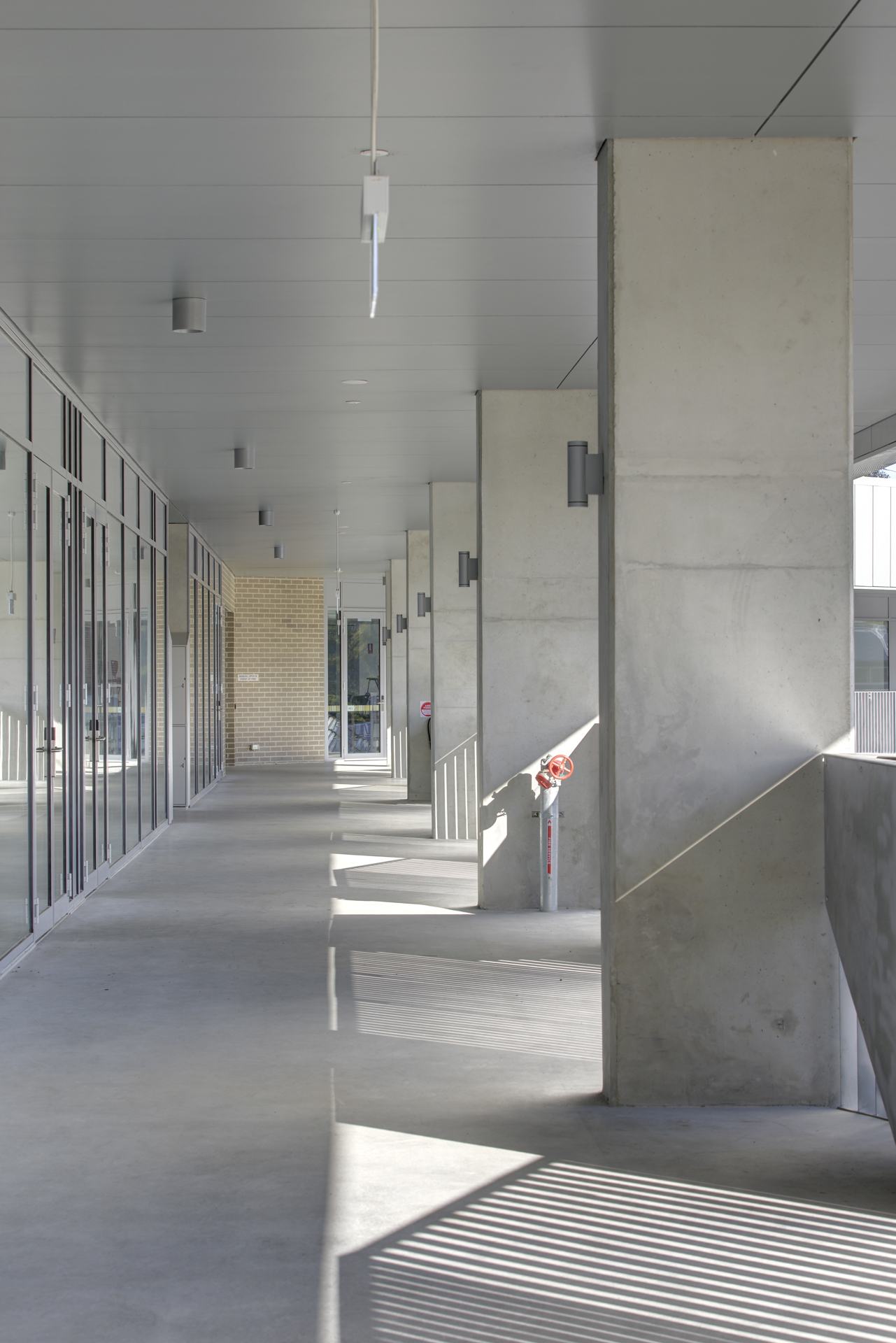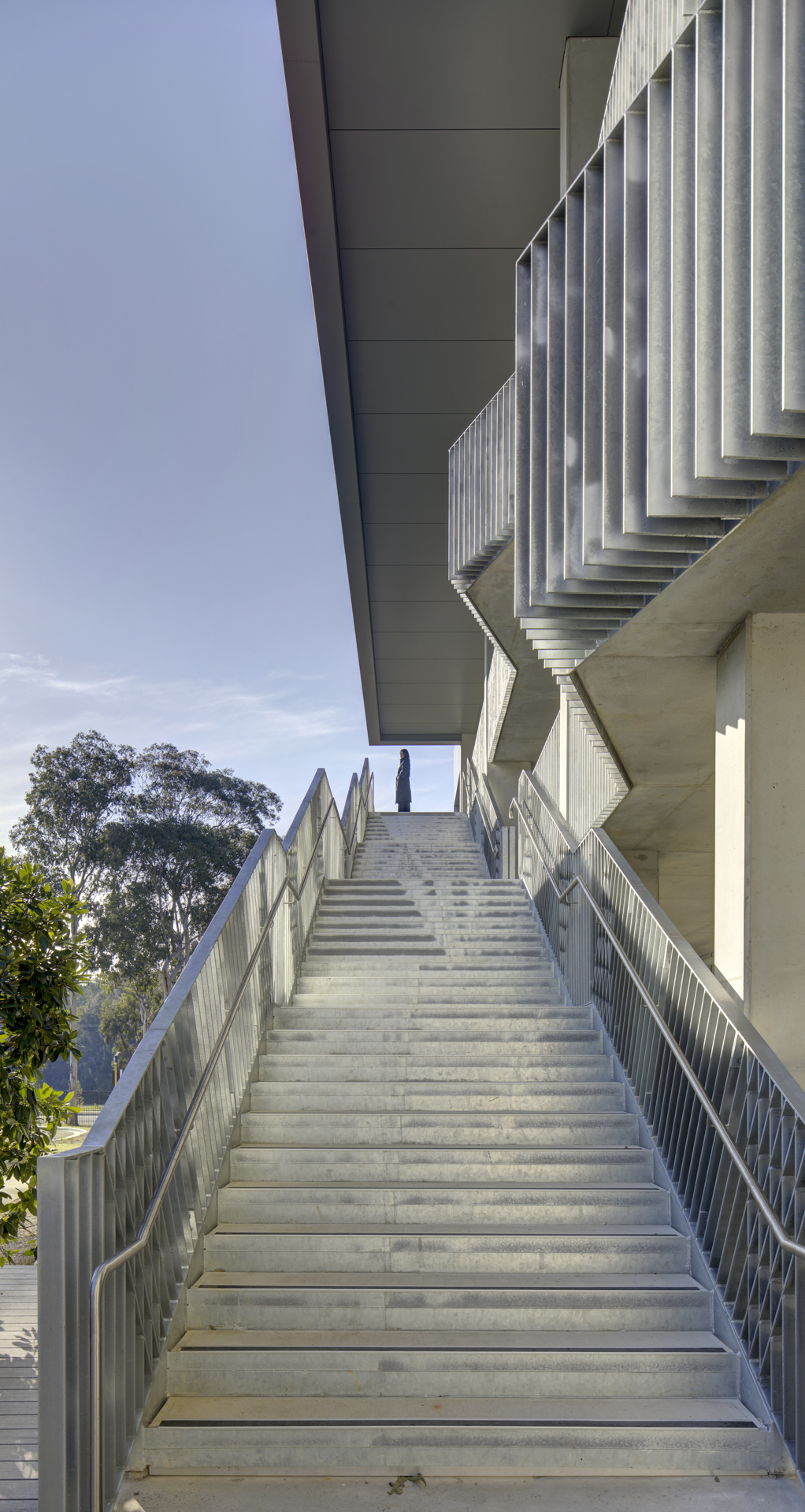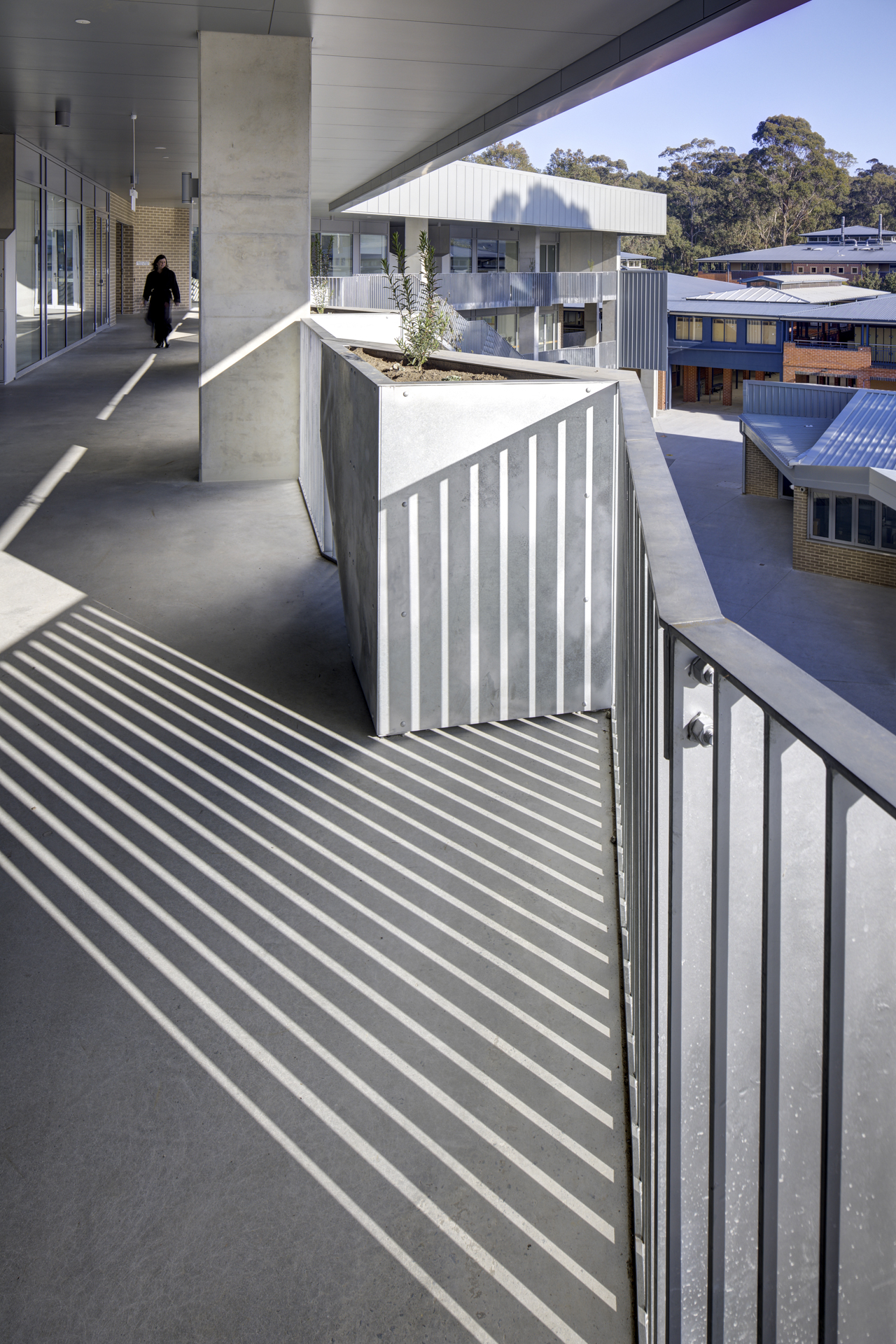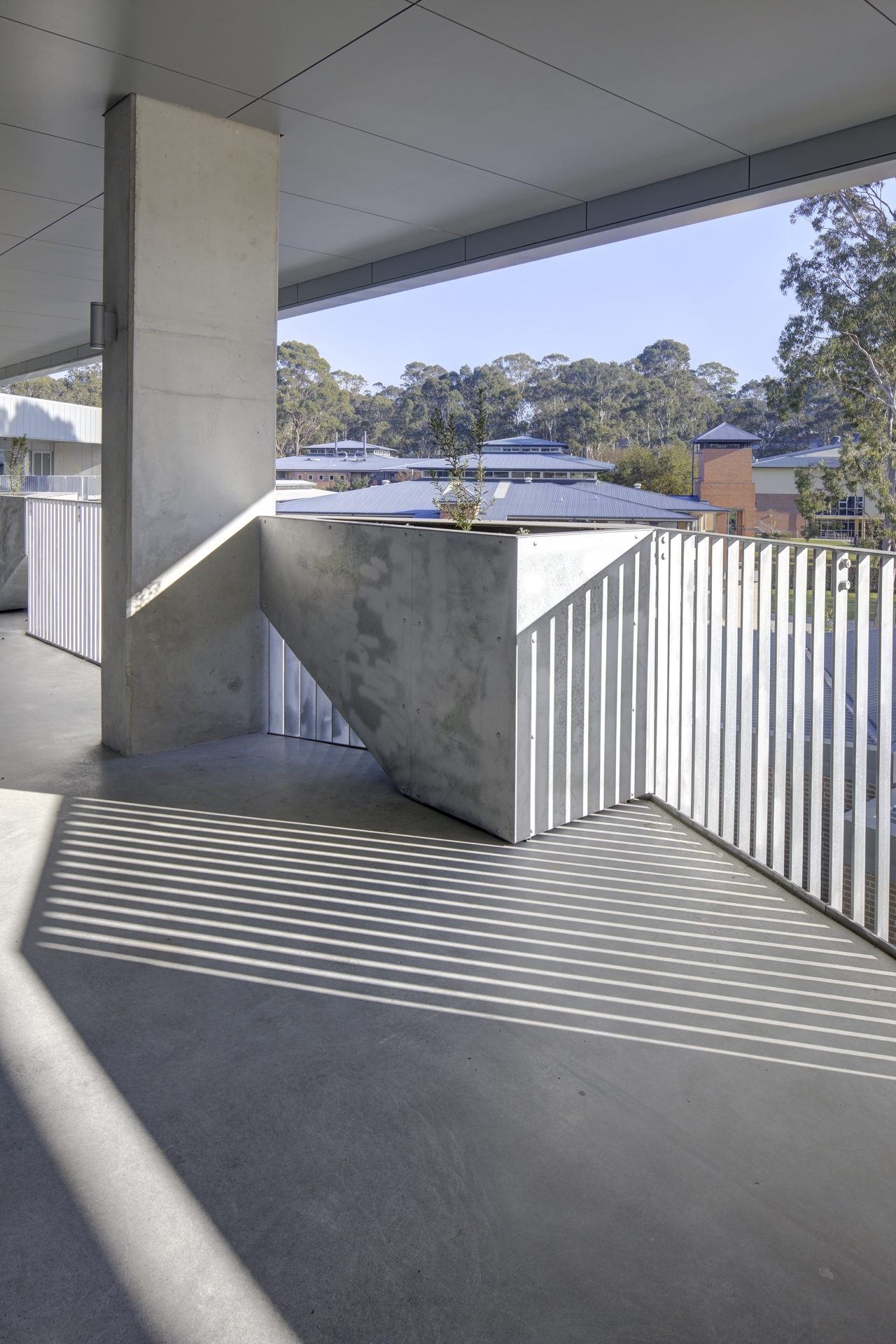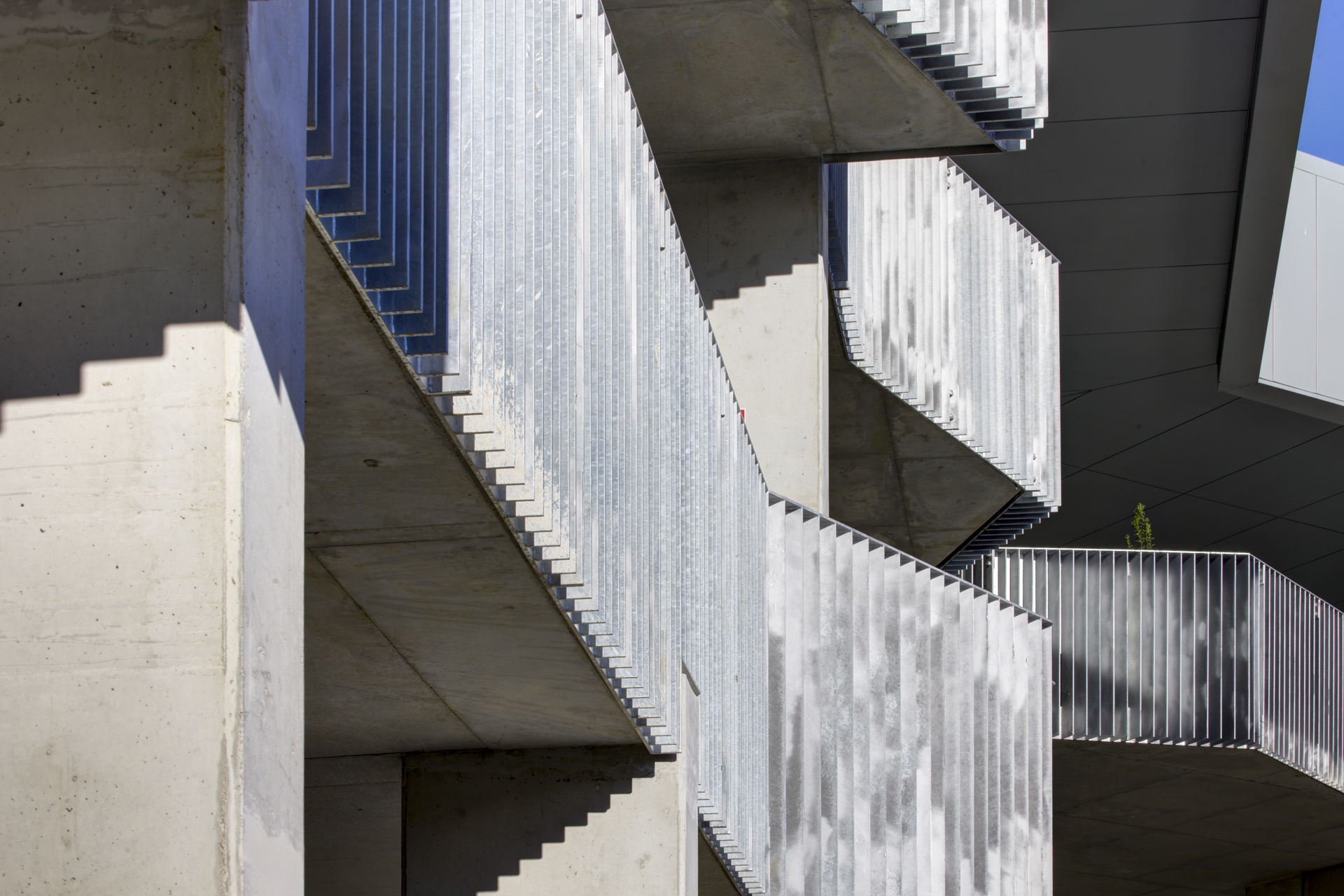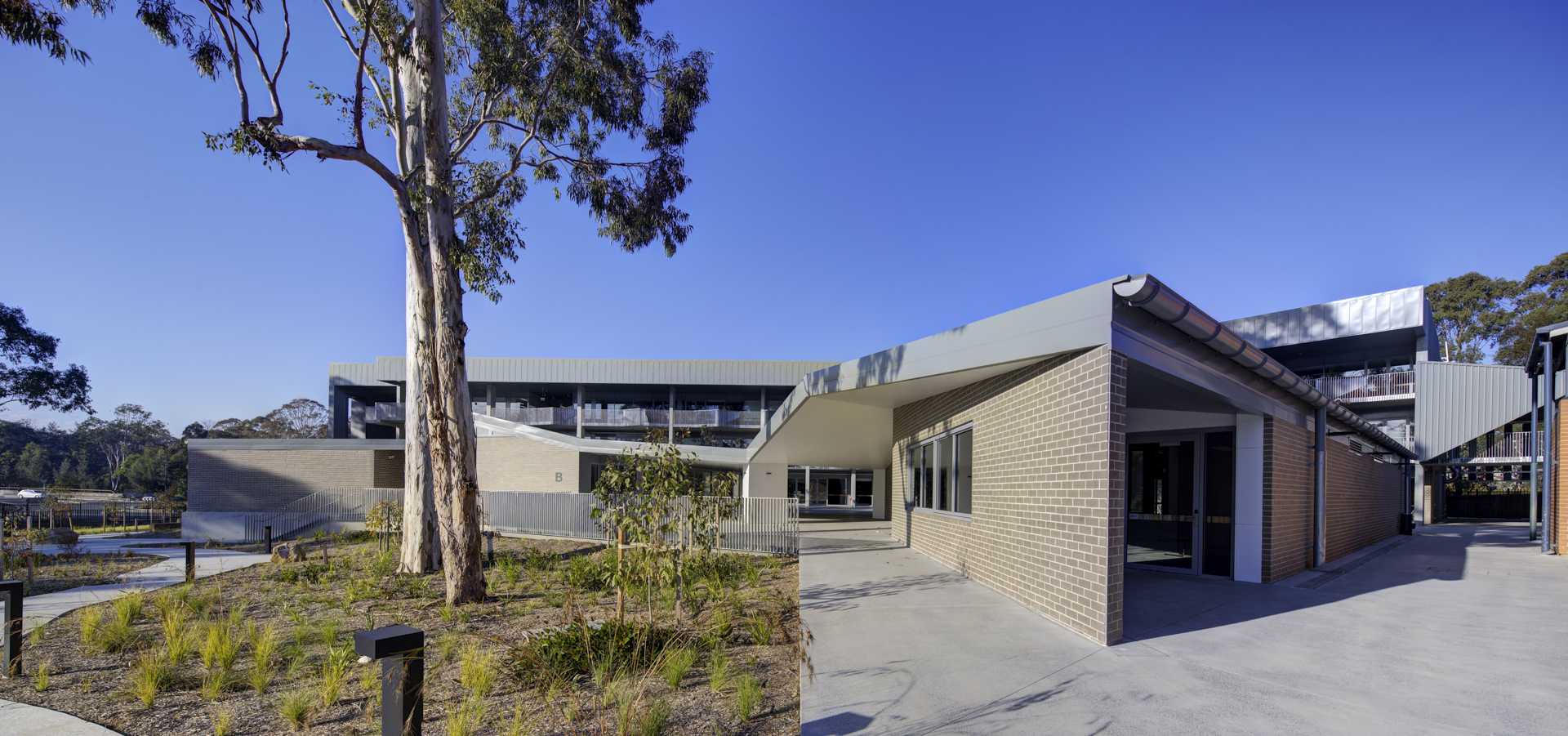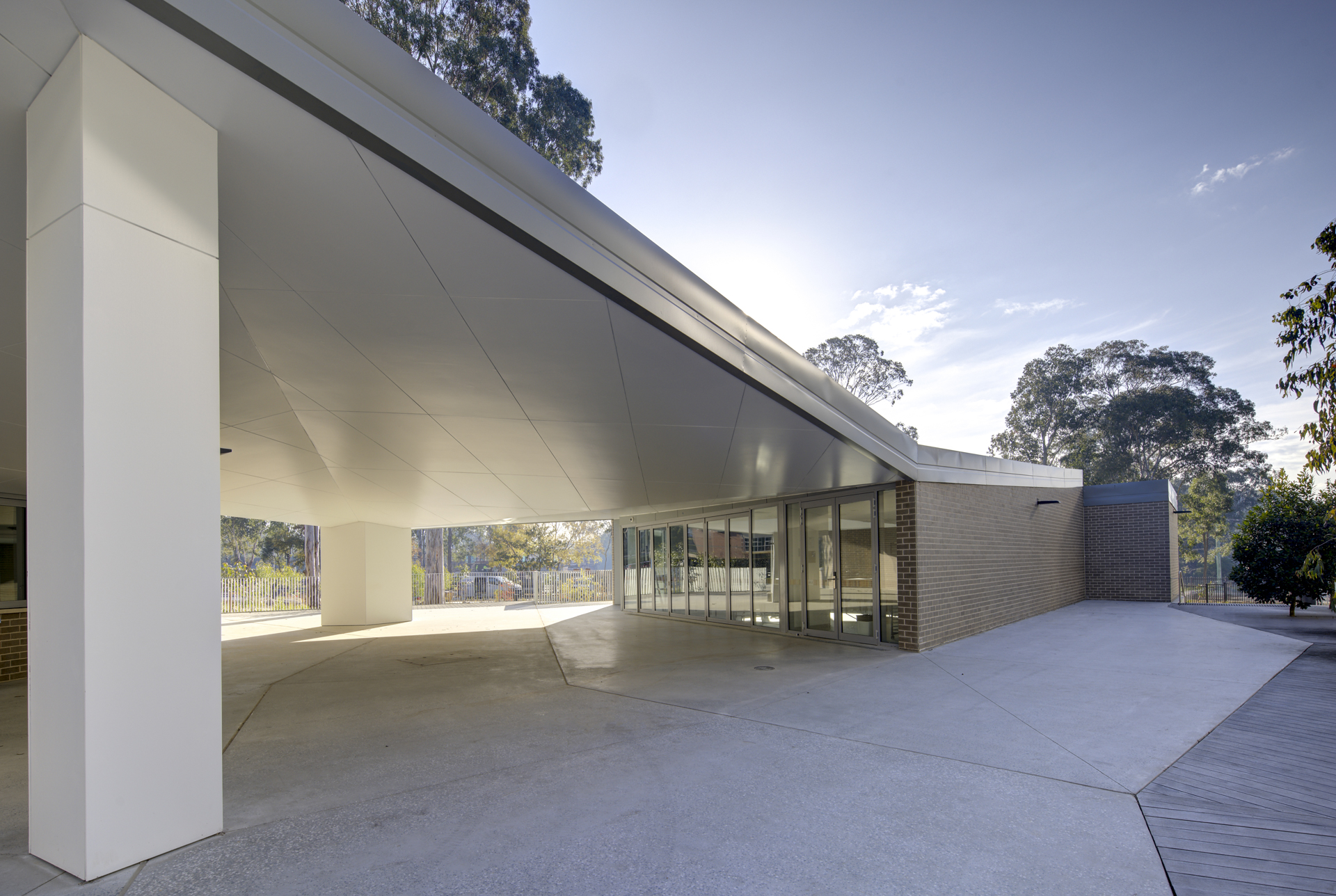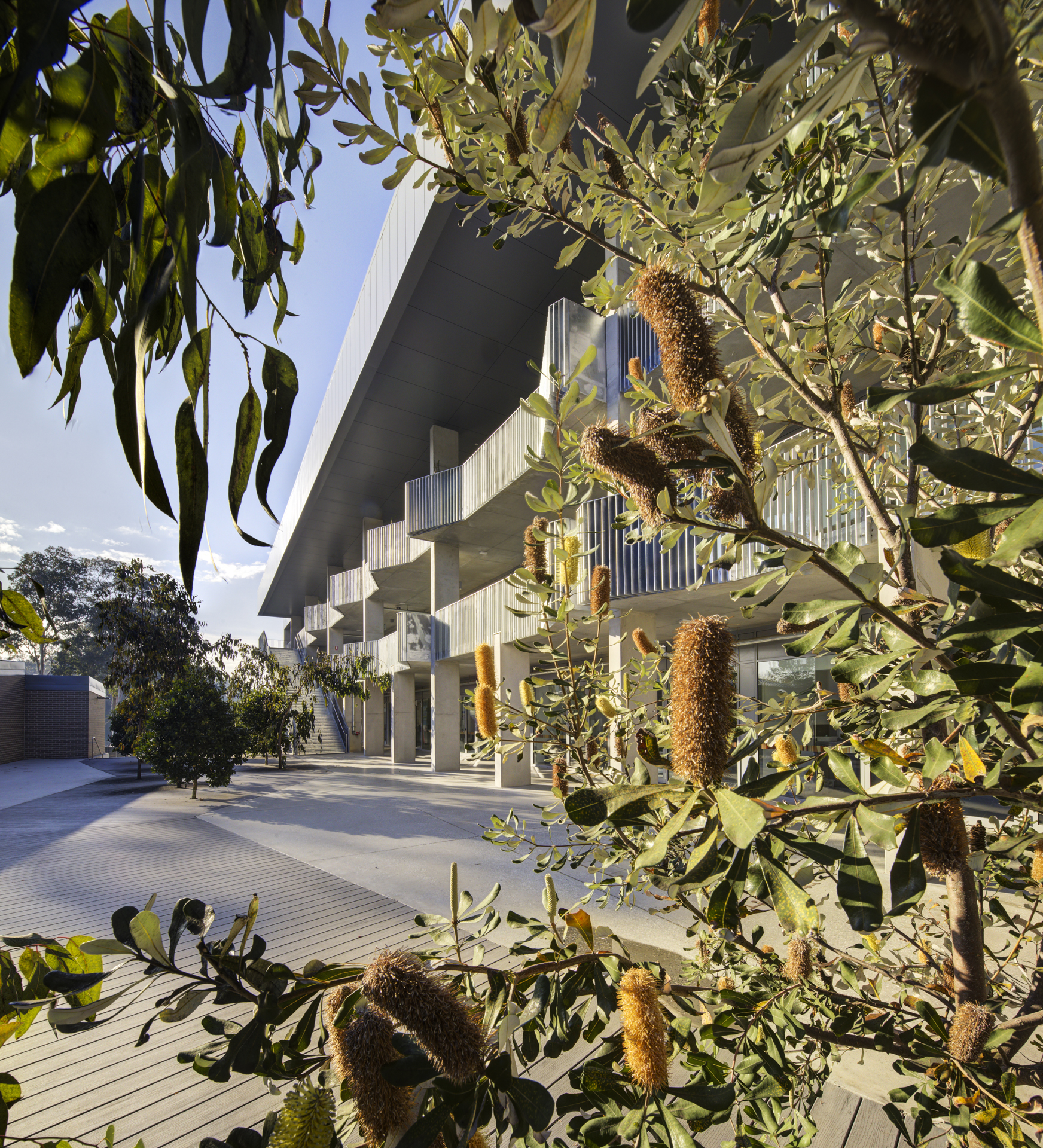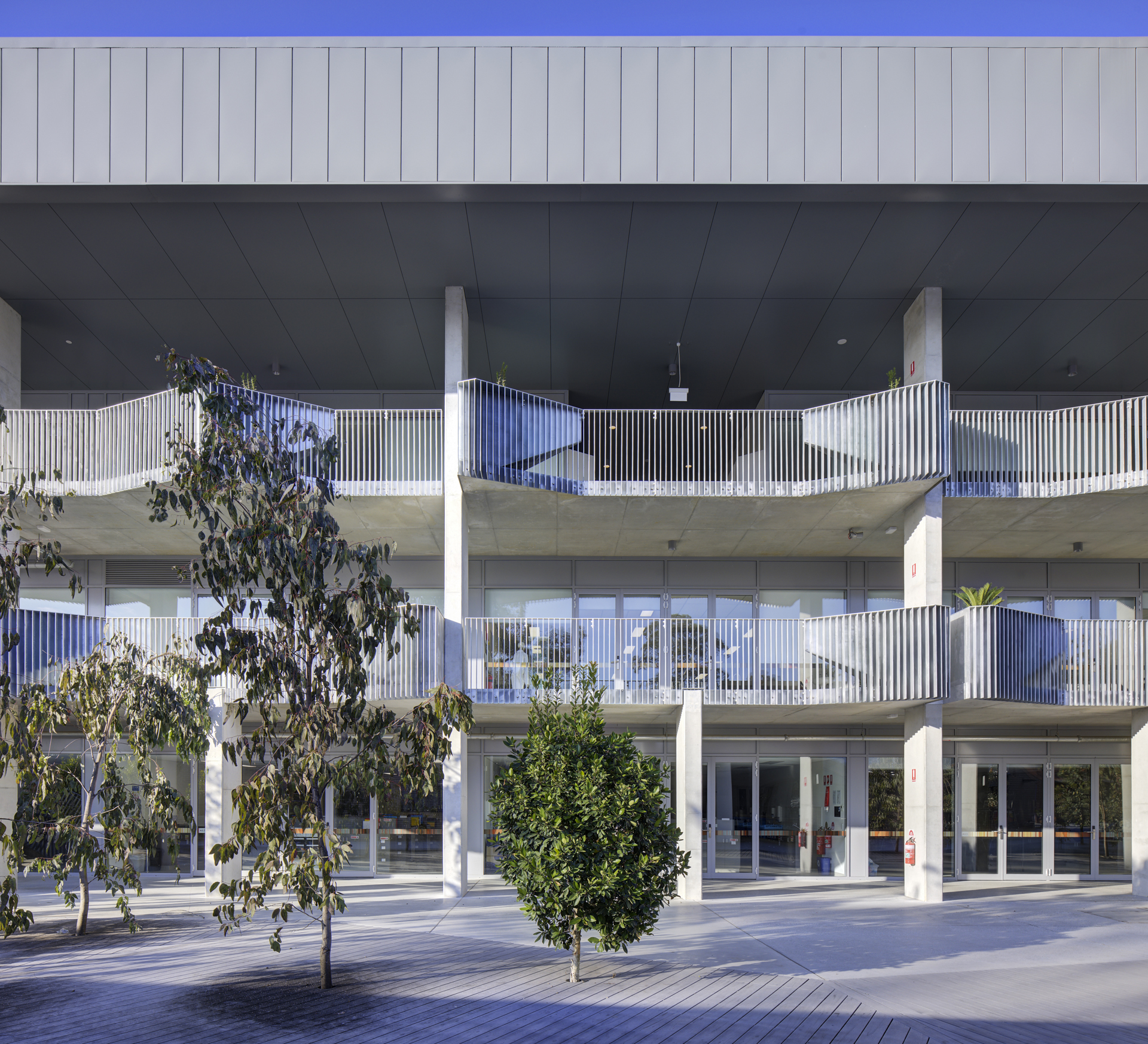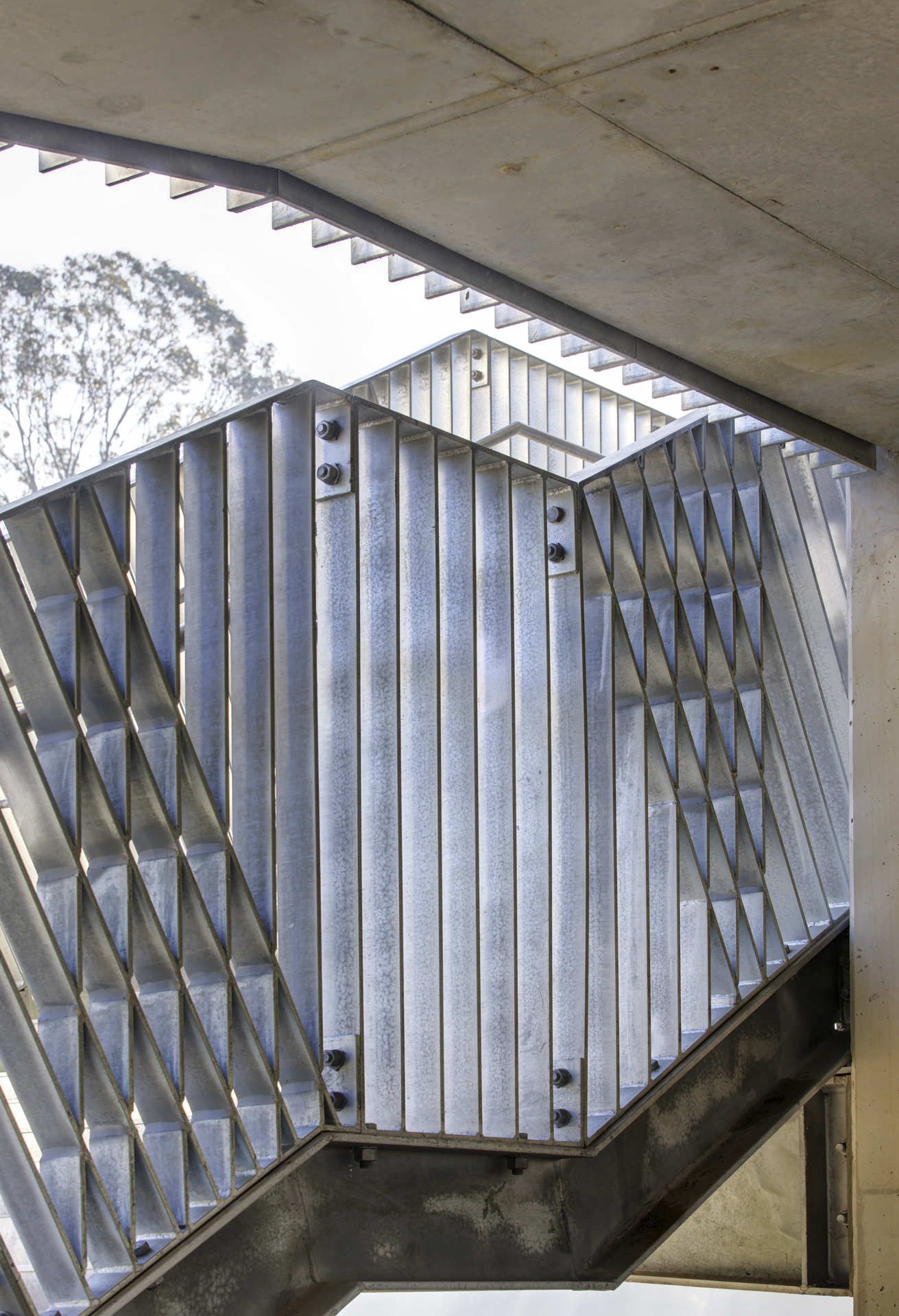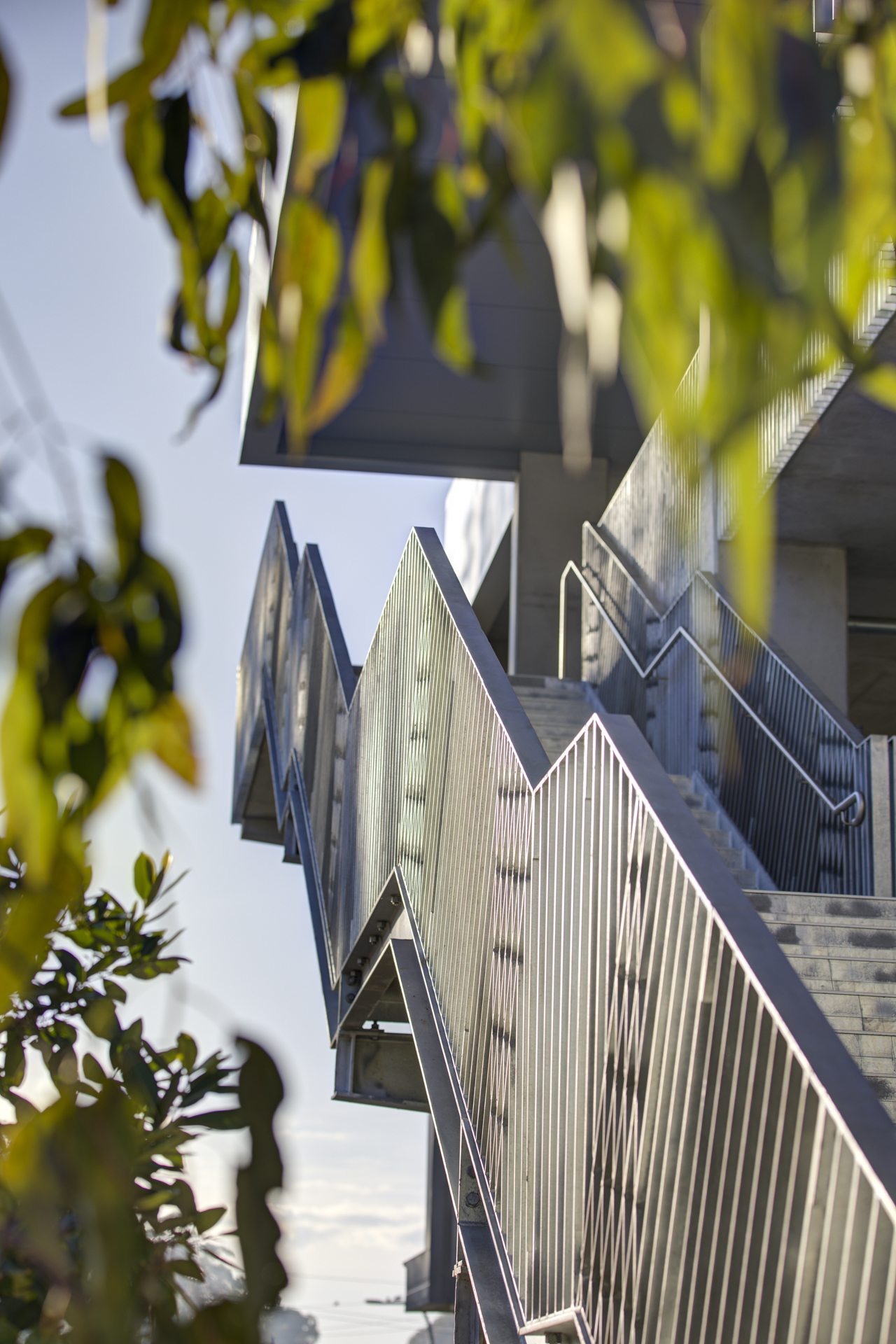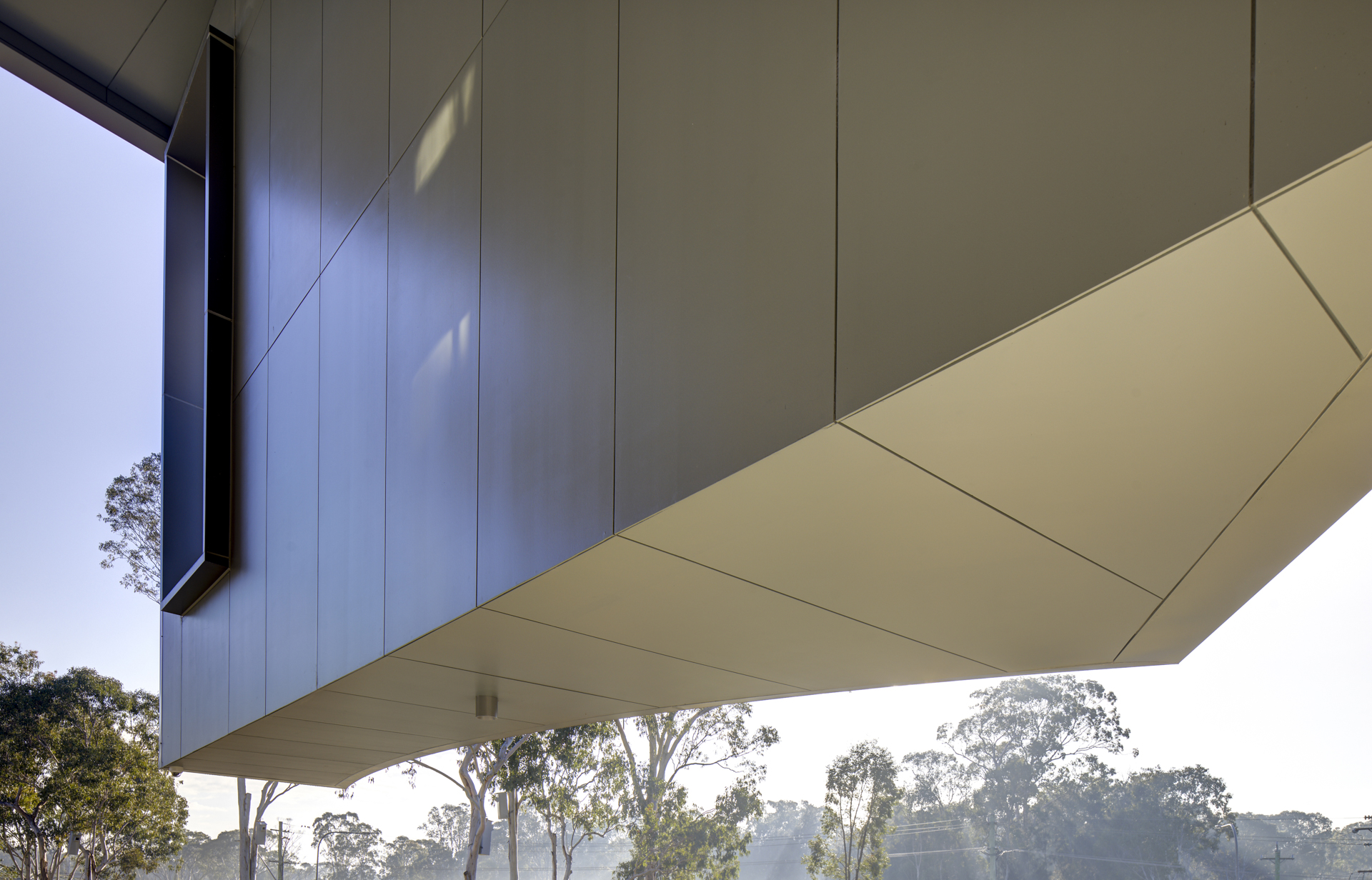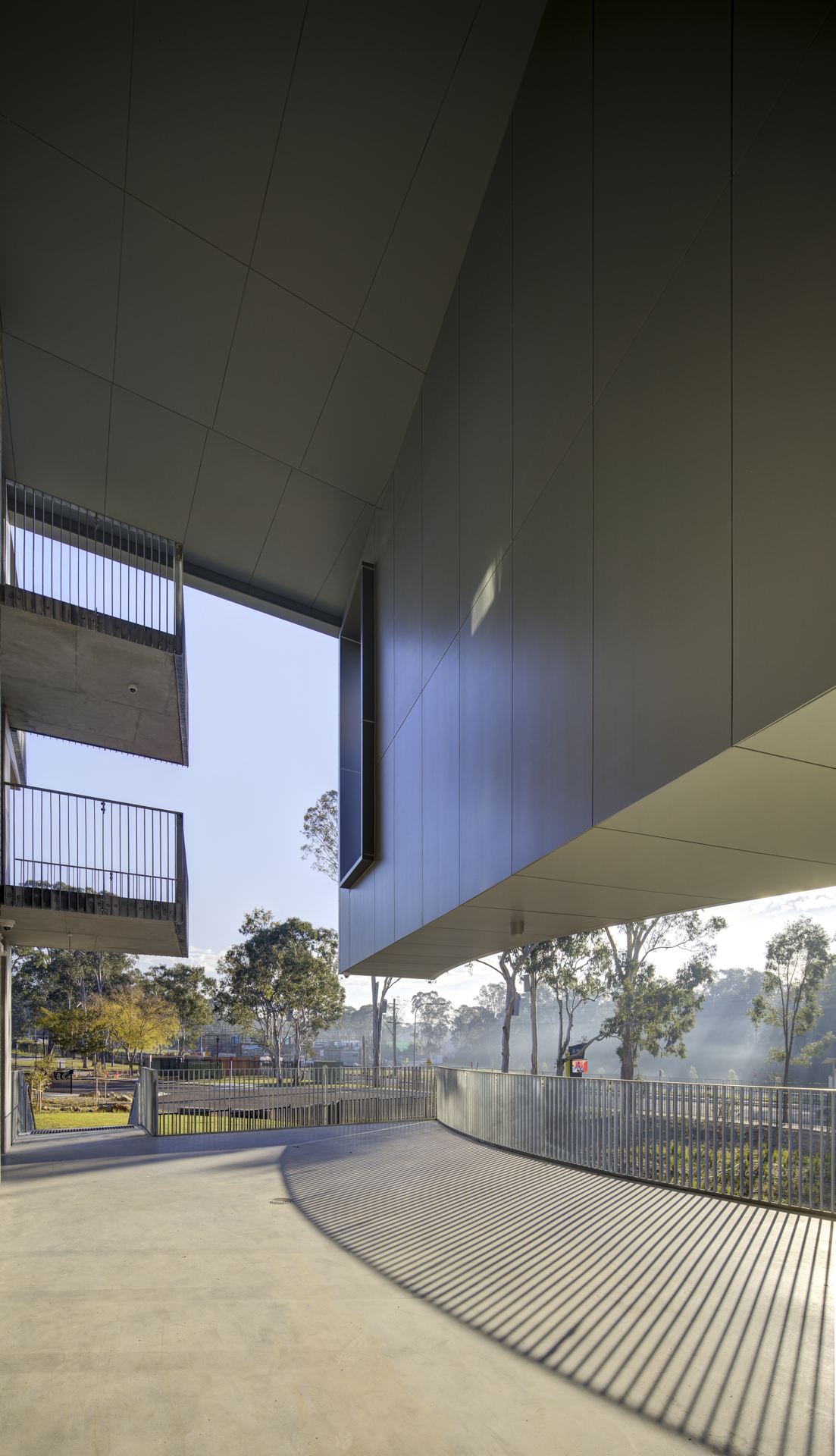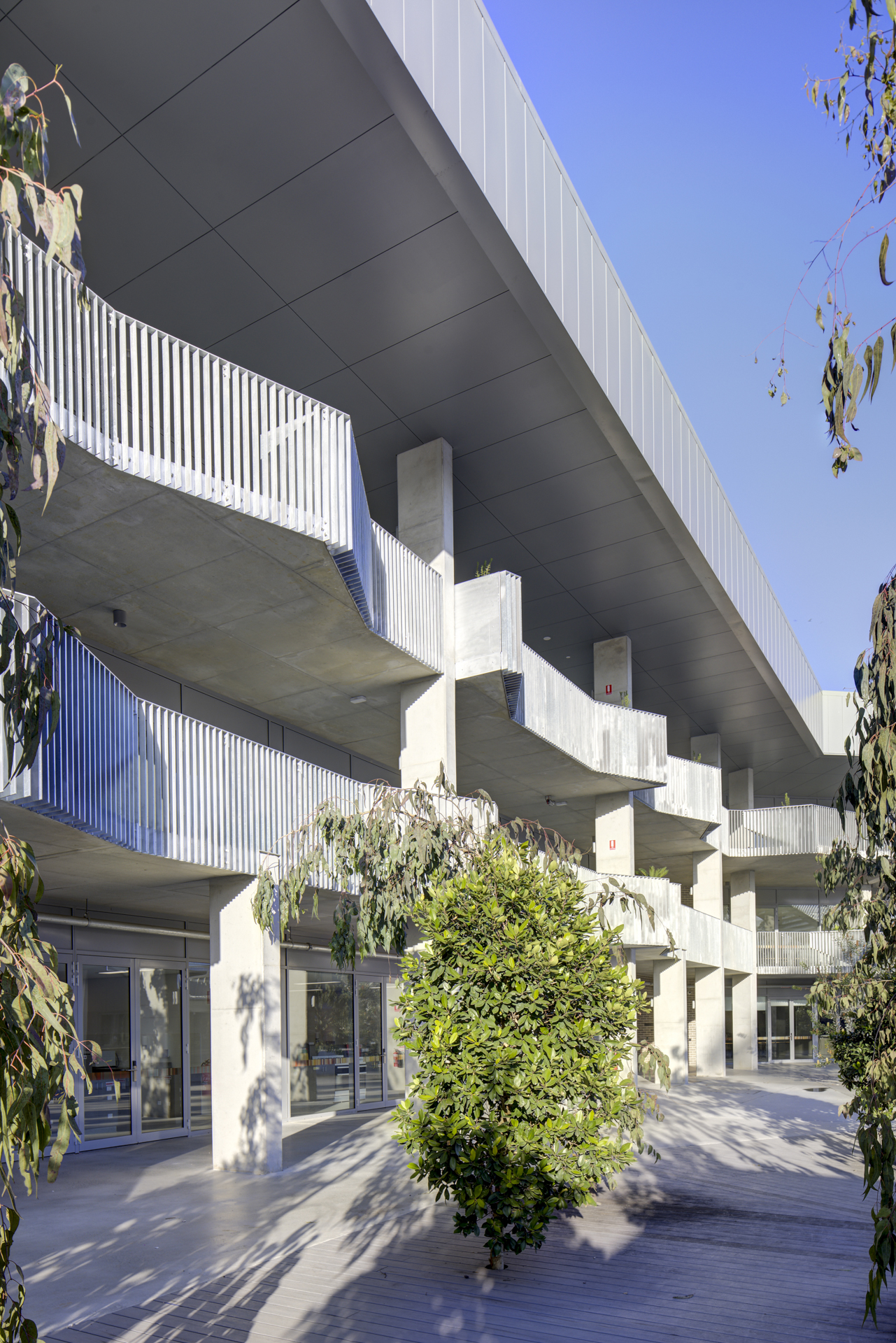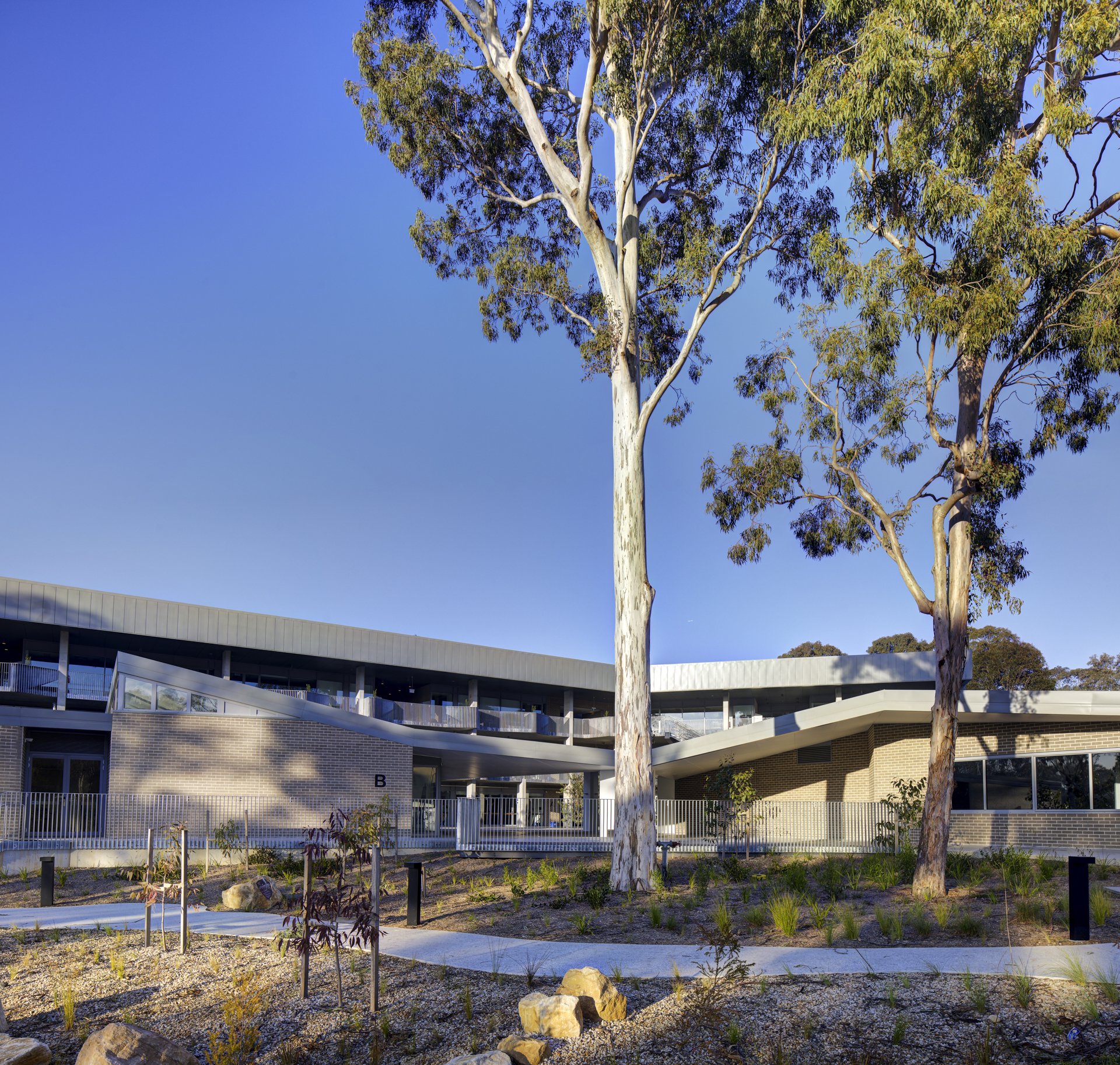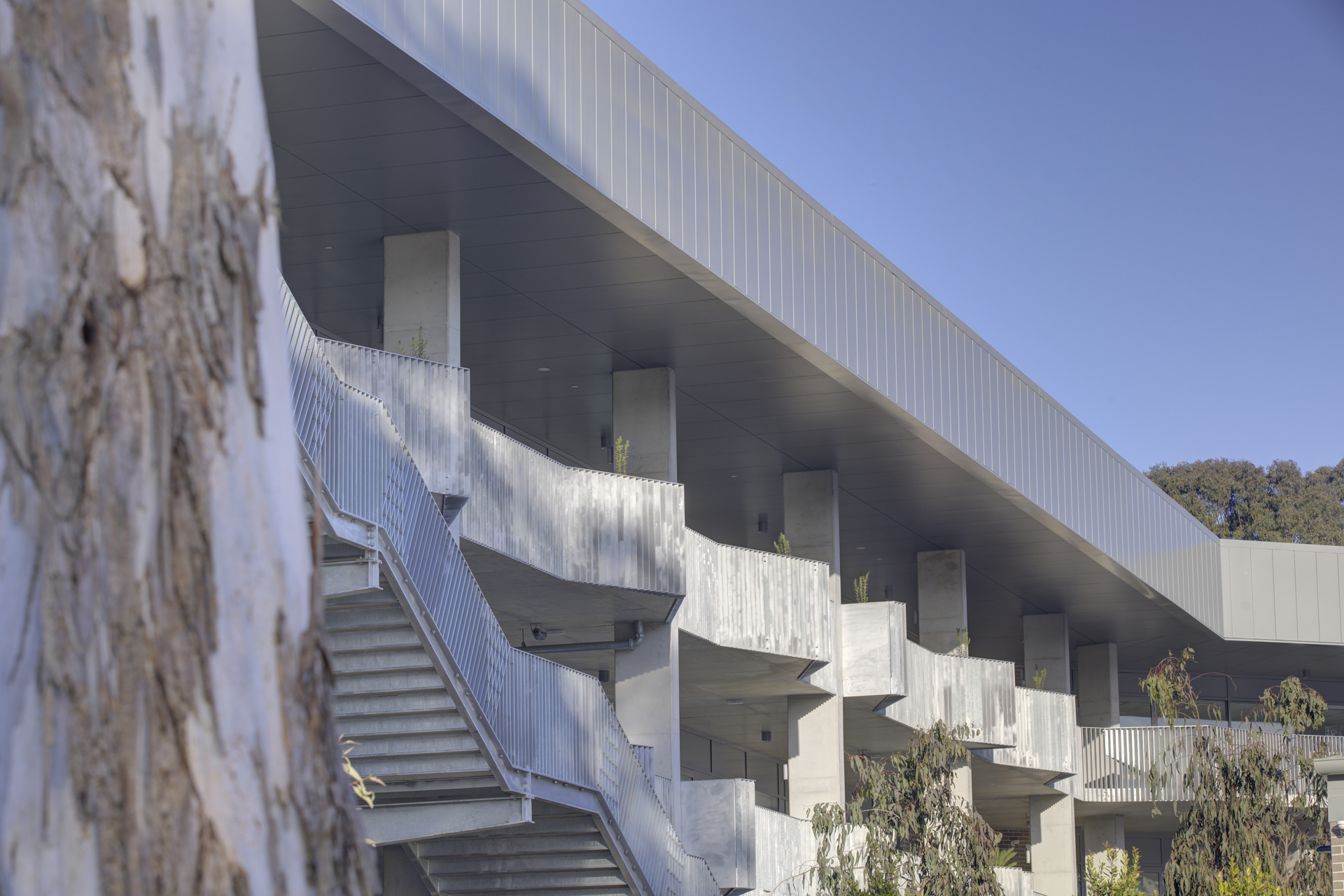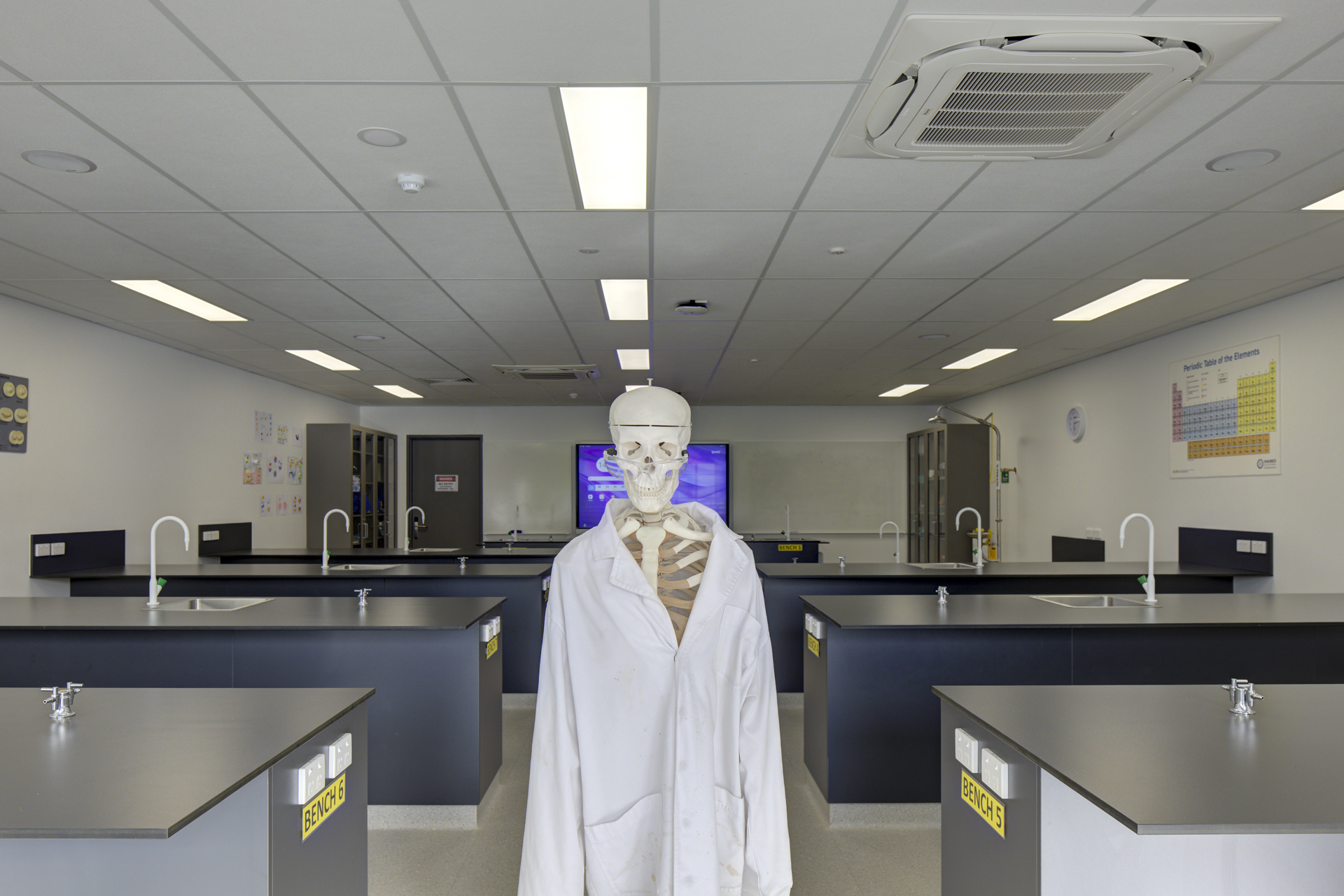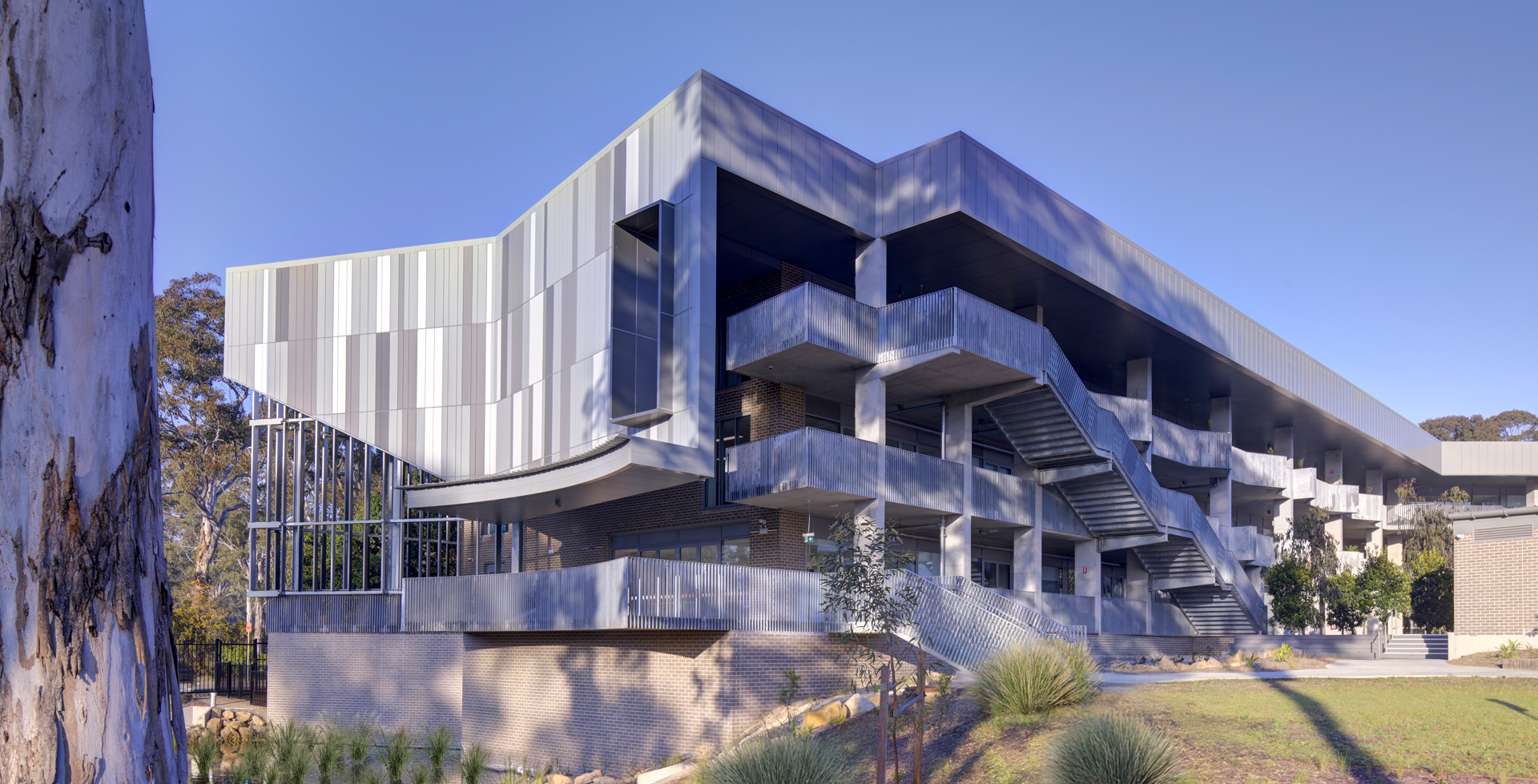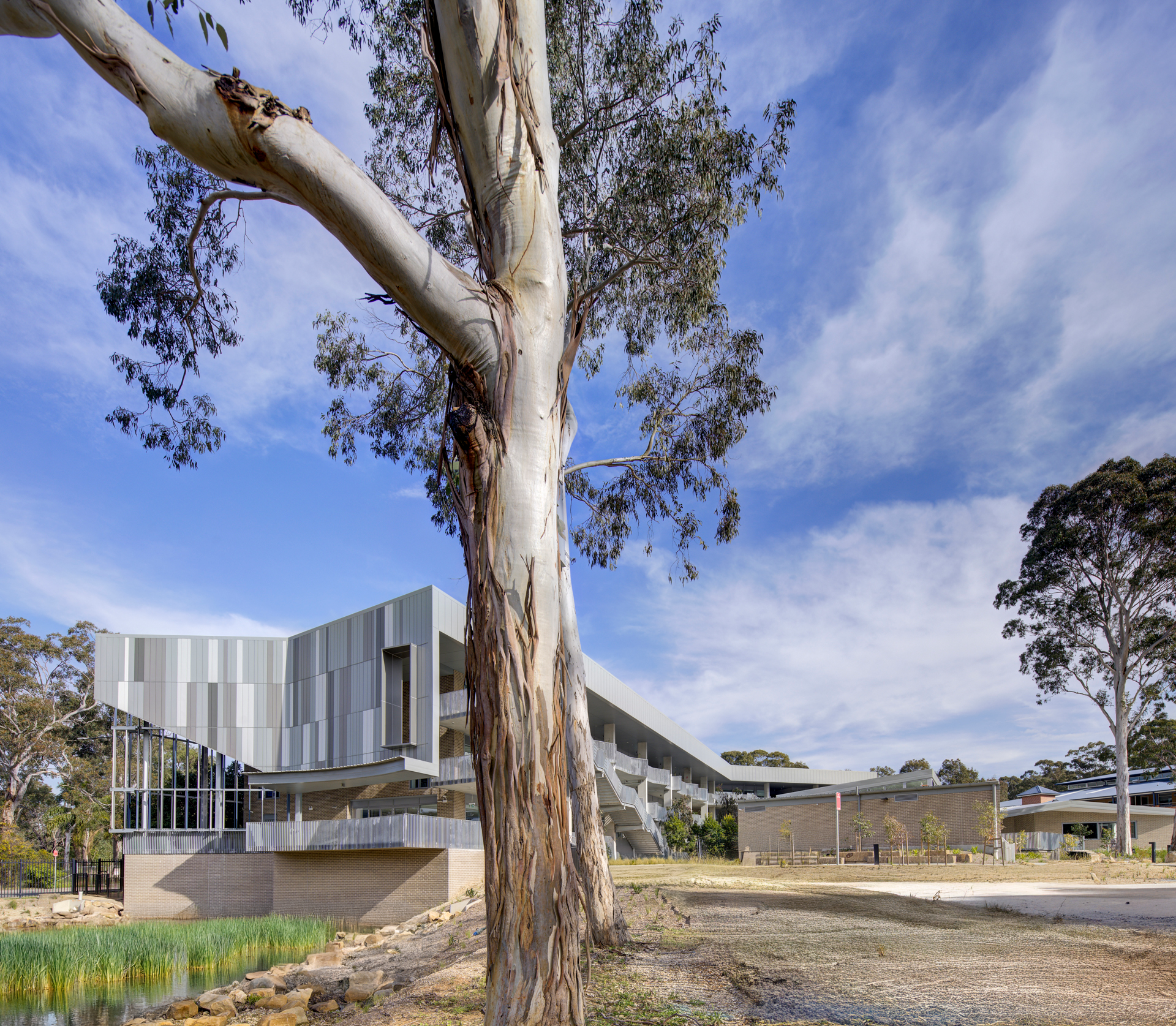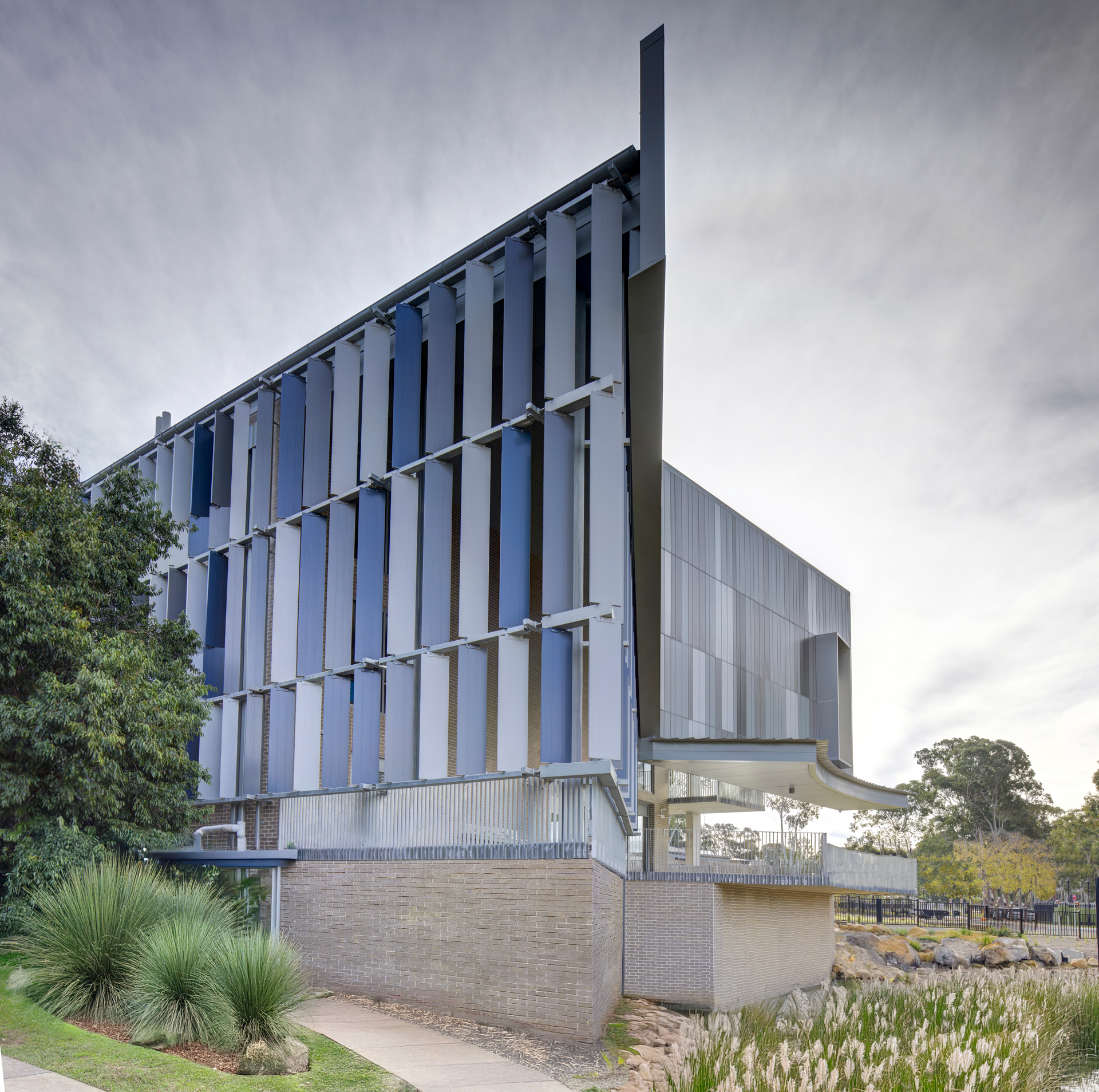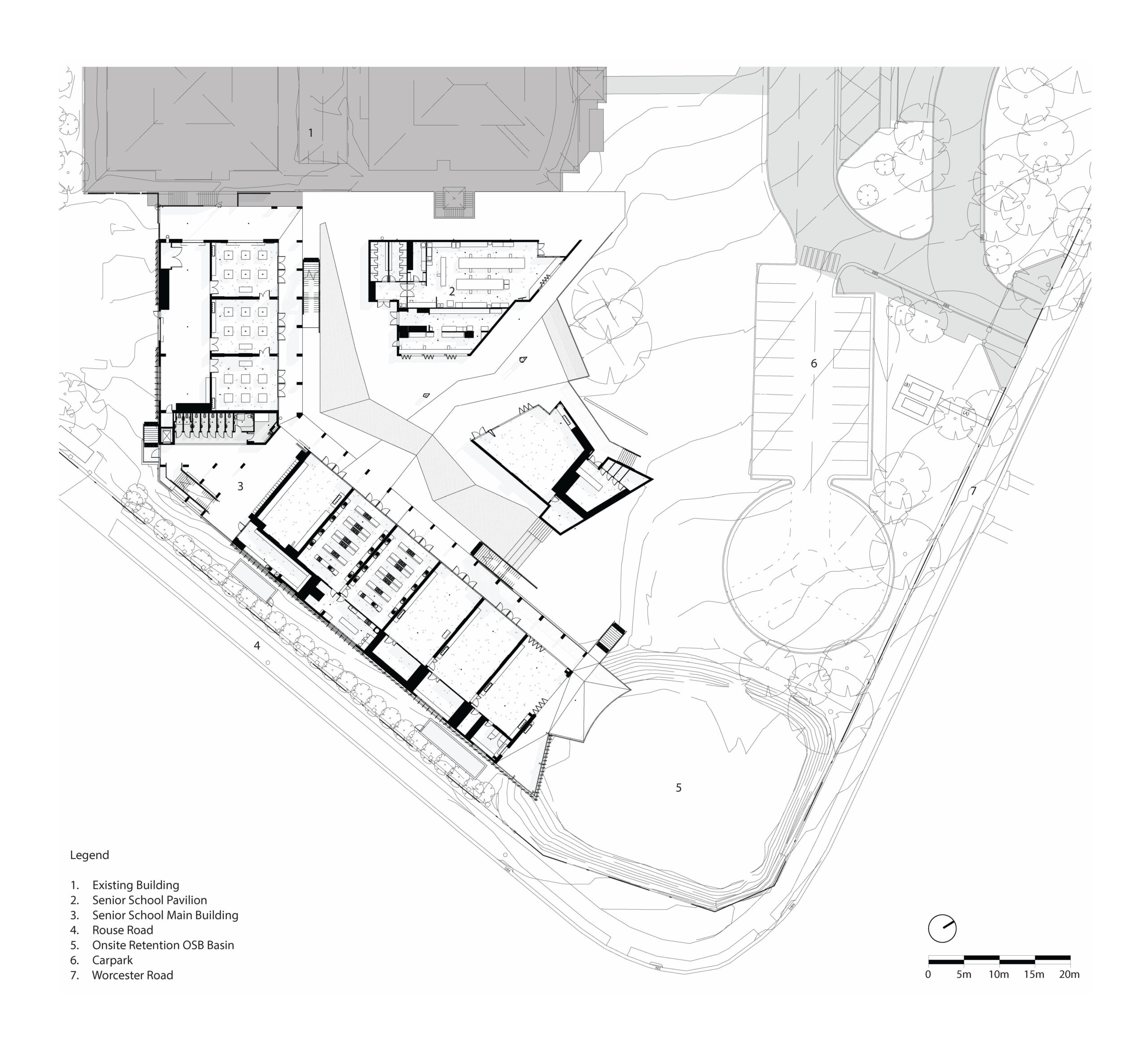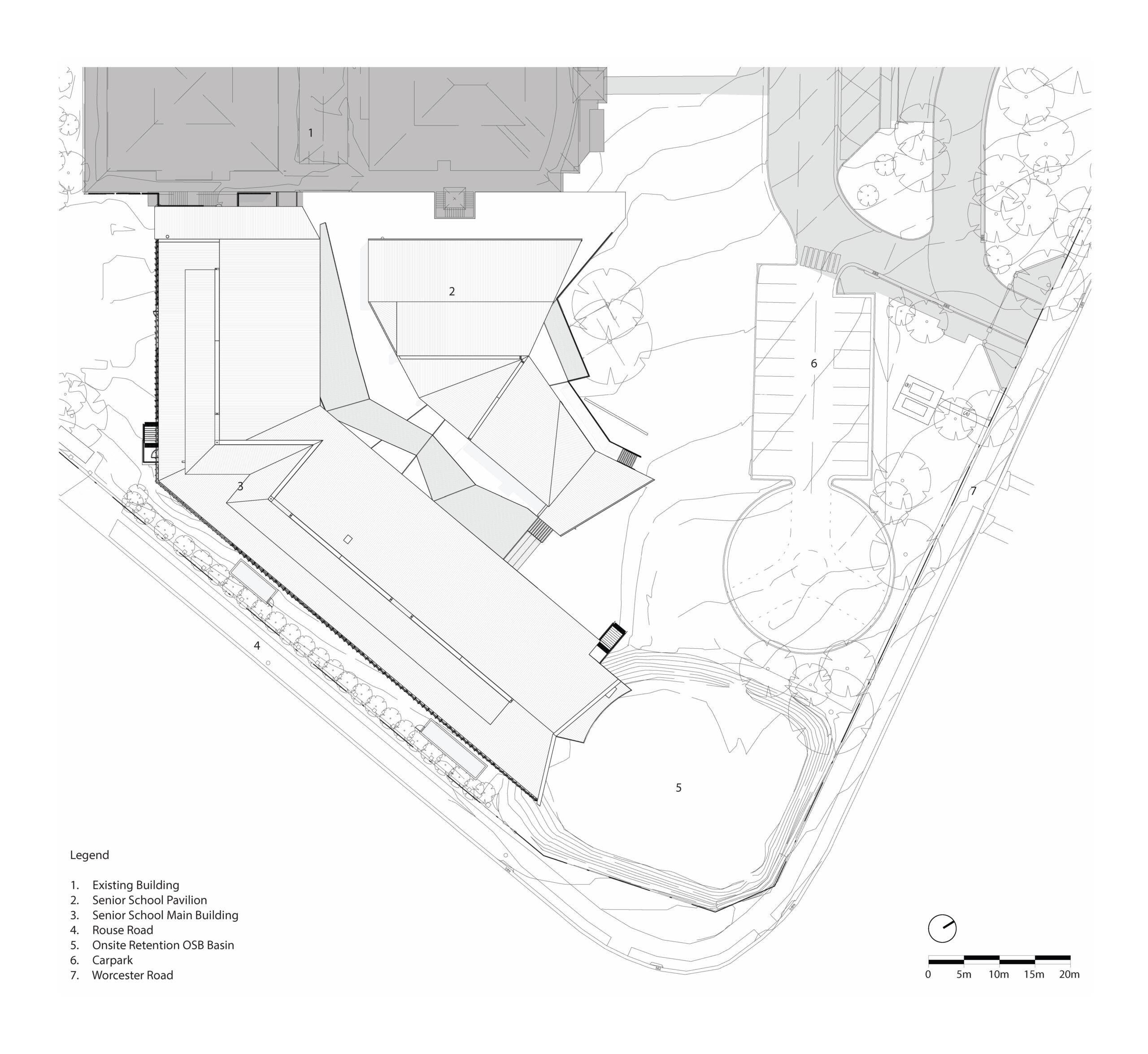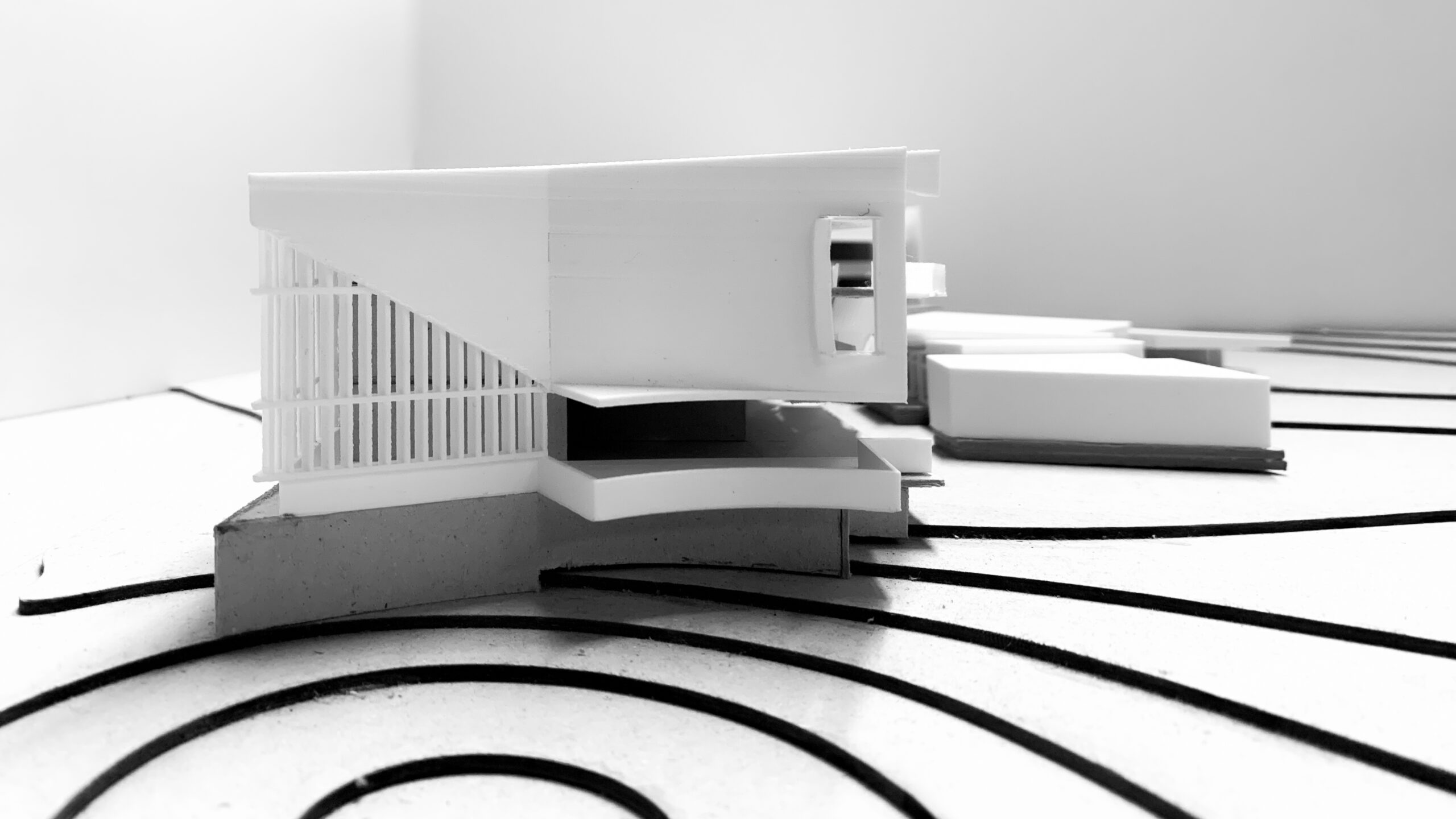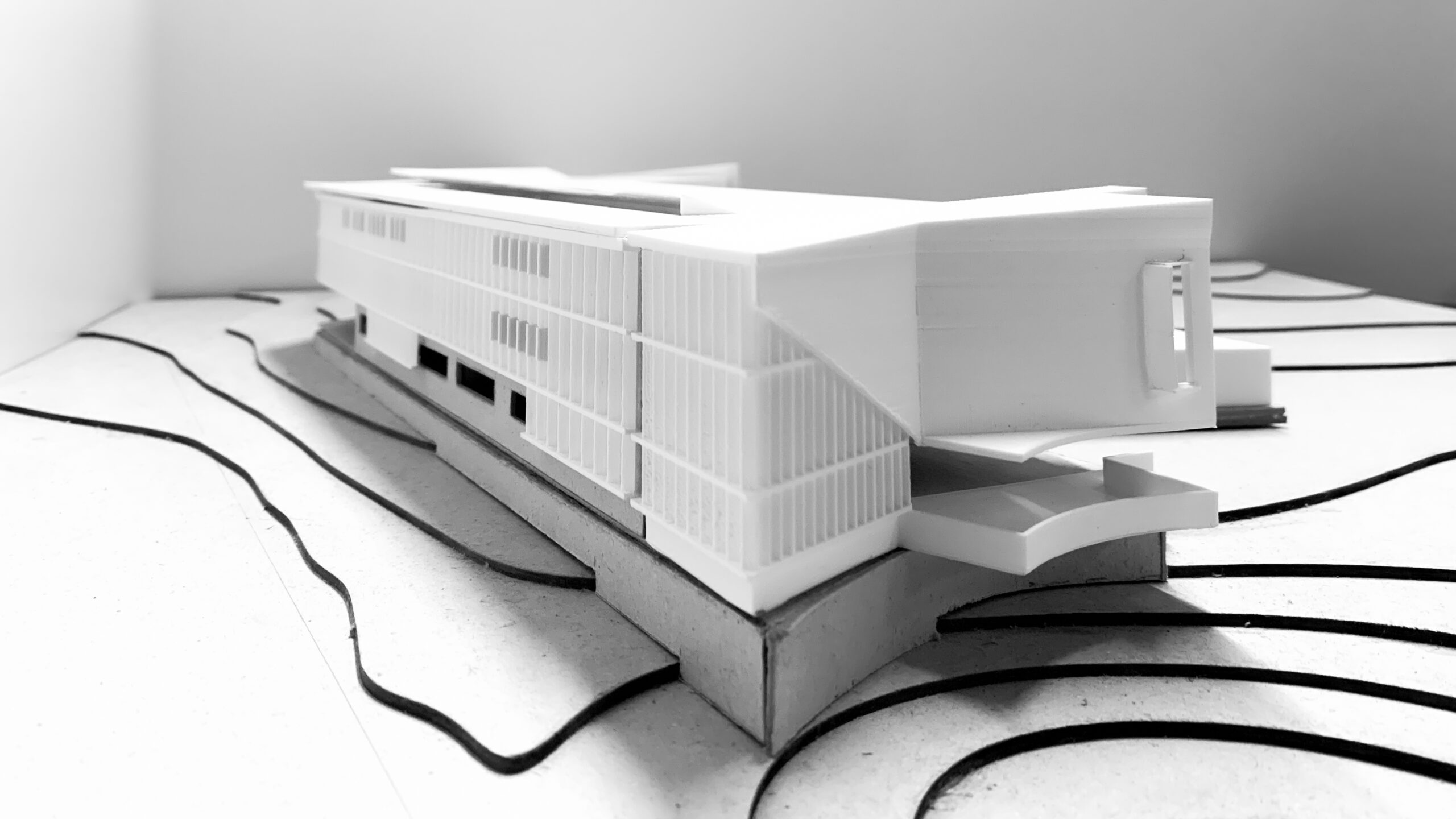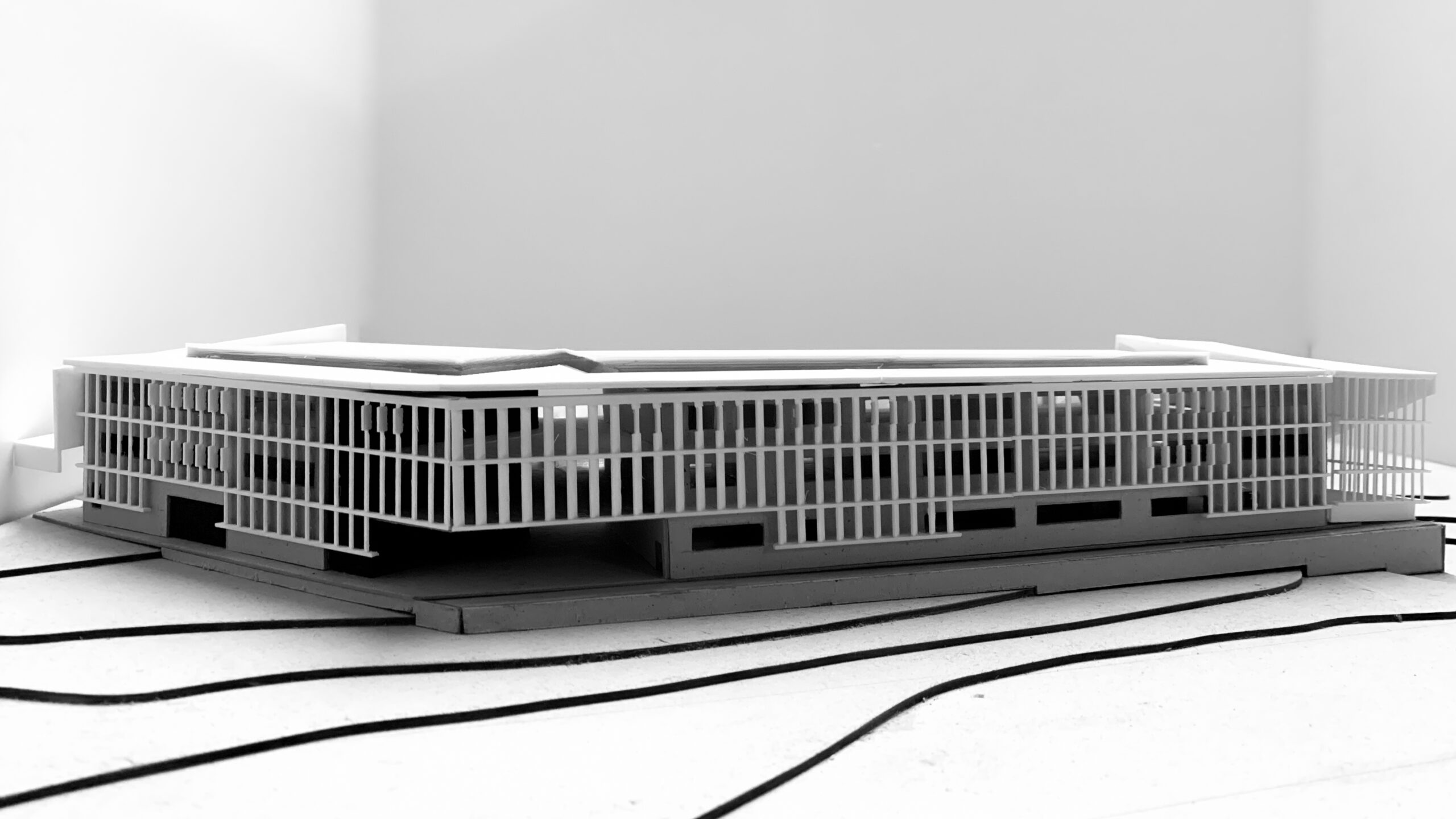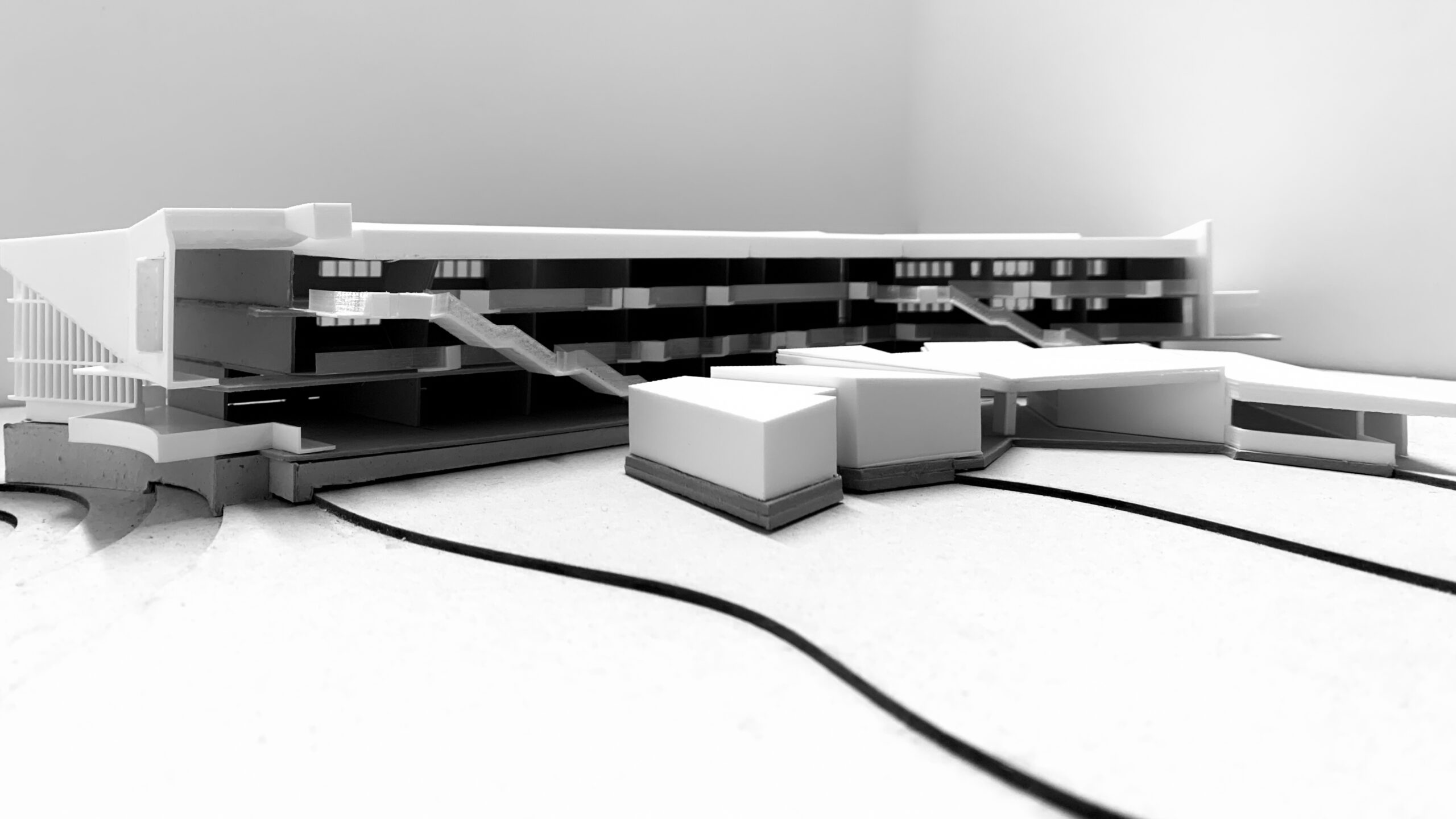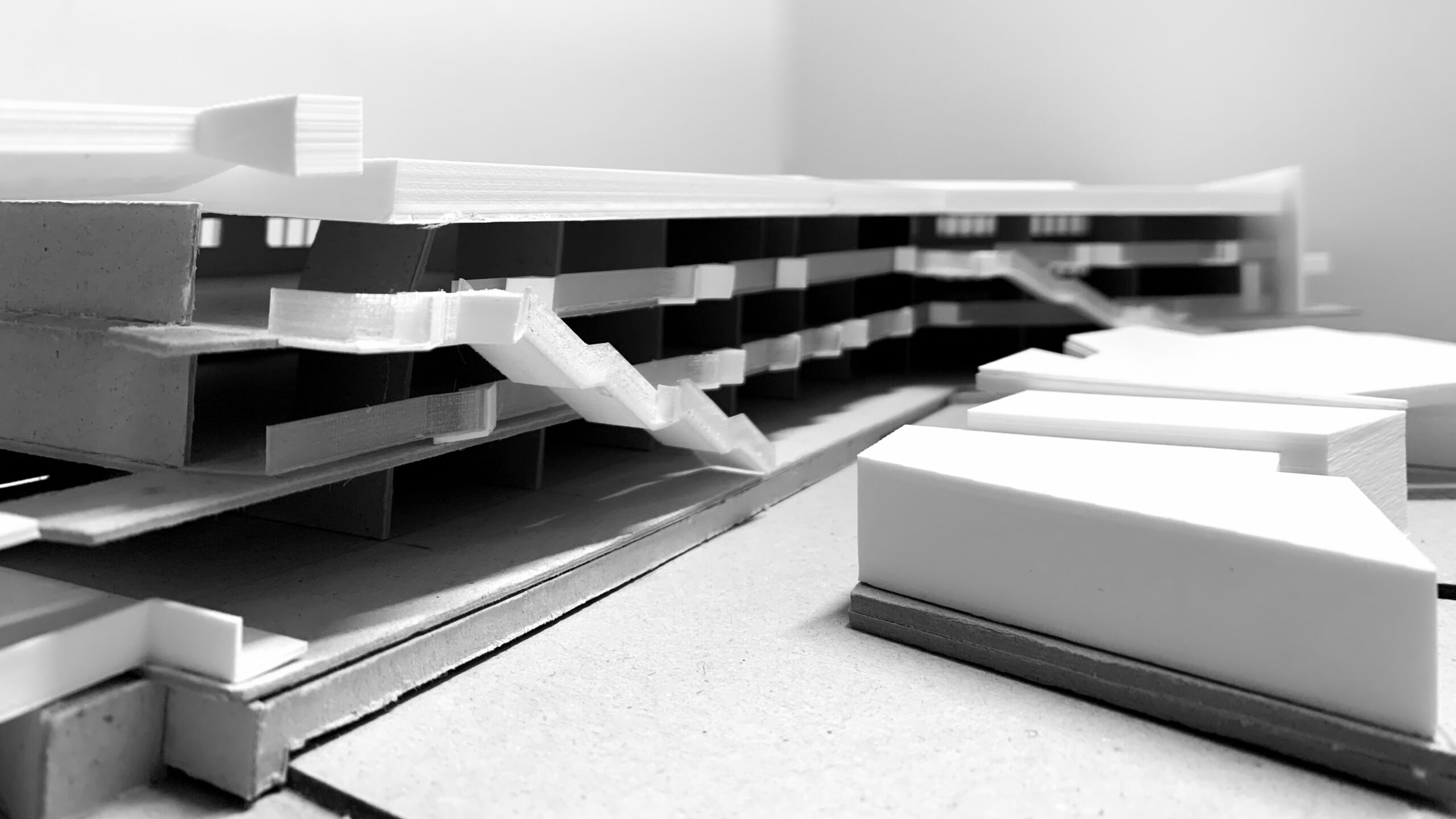-
An education landscape
Rouse Hill Anglican College: Senior Studies Building
Rouse Hill Anglican College was founded in 2002, commencing with a few buildings on rural land to Sydney’s north-west, anticipating the need to educate the burgeoning population planned for that area in coming decades. By 2015, the commencement of planning for a metro line led to additional land acquisitions, which in turn enabled the development of a school with dedicated junior and senior facilities.
The Senior Studies Building is a key part of this vision, occupying a critical site adjacent to the original school core and looking onto some of this remnant landscape while containing the “back” of the school against adjacent residential development. The building form responds to these site logics as a double-sided line structured by the north-south circulation spine through the school which it completes.
A philosophy of student-centred learning underpins the internal planning, a series of loose fit spaces strung along the spine and with distinct front and back aspects. To the west, a more closed façade enables smaller study areas and associated infrastructure while to the east, a porous façade and circulation system maximises student interactions with each other and the landscape – a significant part of the project in both pedagogic and biodiversity terms. Structuring the relation to this landscape is a small one-story building containing a range of specialist functions while the land project itself – working with indigenous partners and landscape practice REALMstudios – restores indigenous logics at a time when more of the extant landscape in this part of Sydney is being lost.
- TYPE Education
- LOCATION ROUSE HILL | AU
- YEAR 2021 - 2025
- PHOTOGRAPHY
APPROACH
A simple, linear arrangement of learning spaces along a spine responds to the larger place logics of orientation and circulation. A simple chevron shape results which, in its four distinct façades, brings these broader logics into specific focus.
The short south façade is oriented to the major road bypassing the school, acts as a sort of billboard that both presents to that road but also protects the activities within while its bent form focuses on the detention basis and pond below. The rear (north) façade is invisible as much as this is visible, with its primary role to afford connectivity to the existing buildings on site.
The western façade, facing the hot afternoon sun and adjacent residential development, is a louvred screen that shields those within while limiting views in or out. Its complete opposite, the east façade, is completely porous, dominated by the circulation system that structures its interface with the landscape. These four distinct facades each generates as mask or cladding that provide a contiguous surface but one that changes to reflect its specific requirements.
